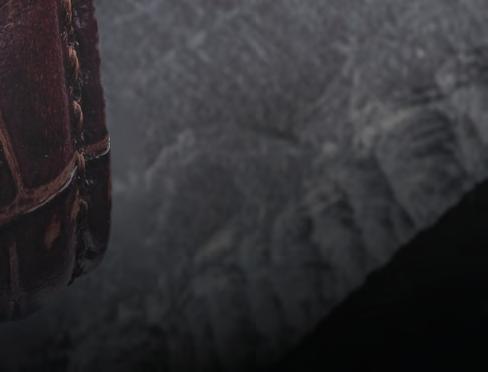




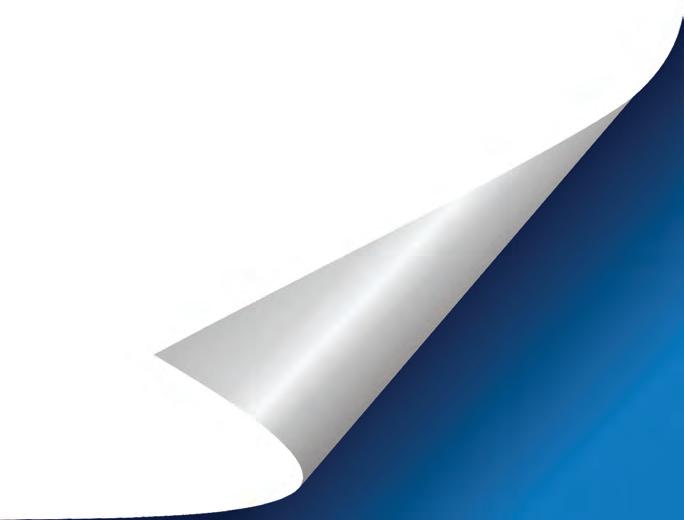






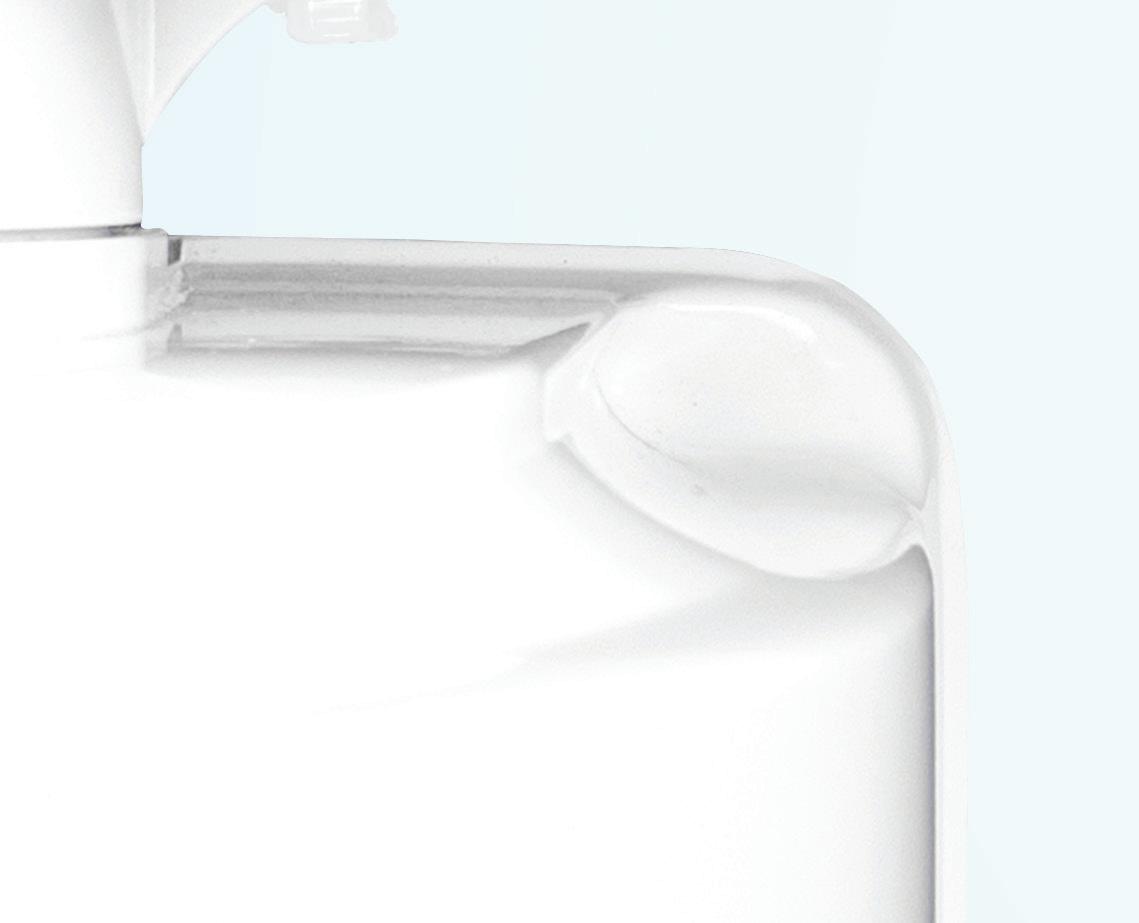












Ever see a commercial harbor full of Furuno Marine Electronics and wonder why the pros rely on us?


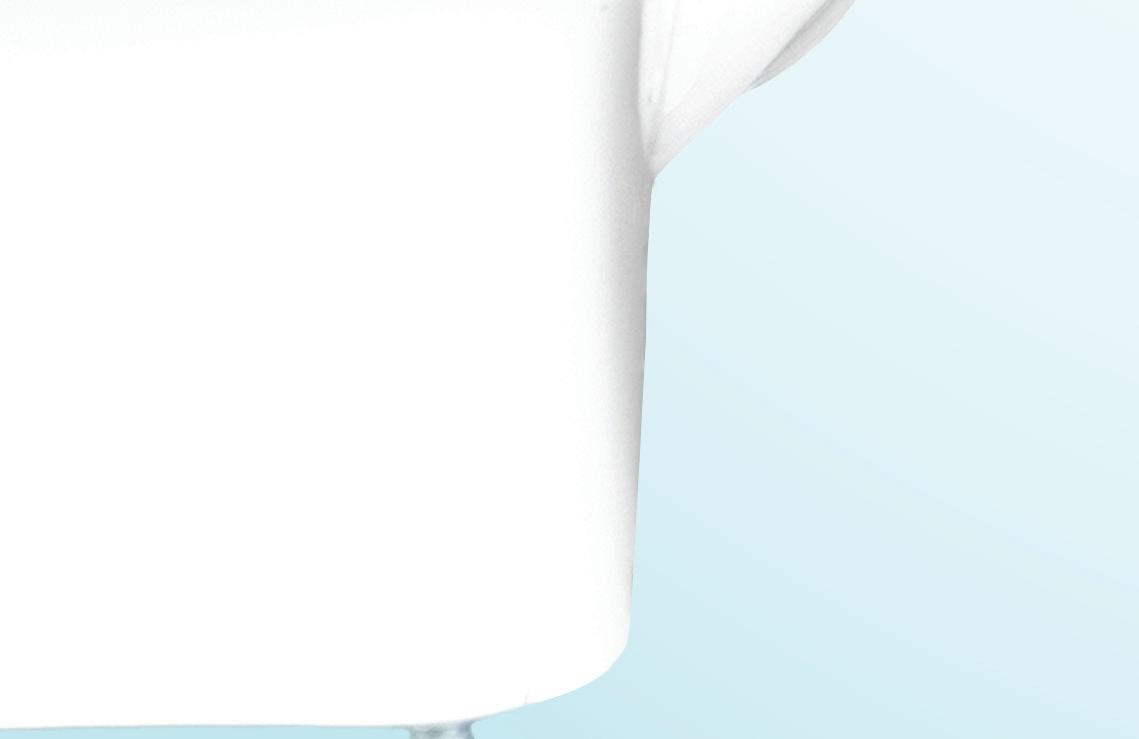


See why here









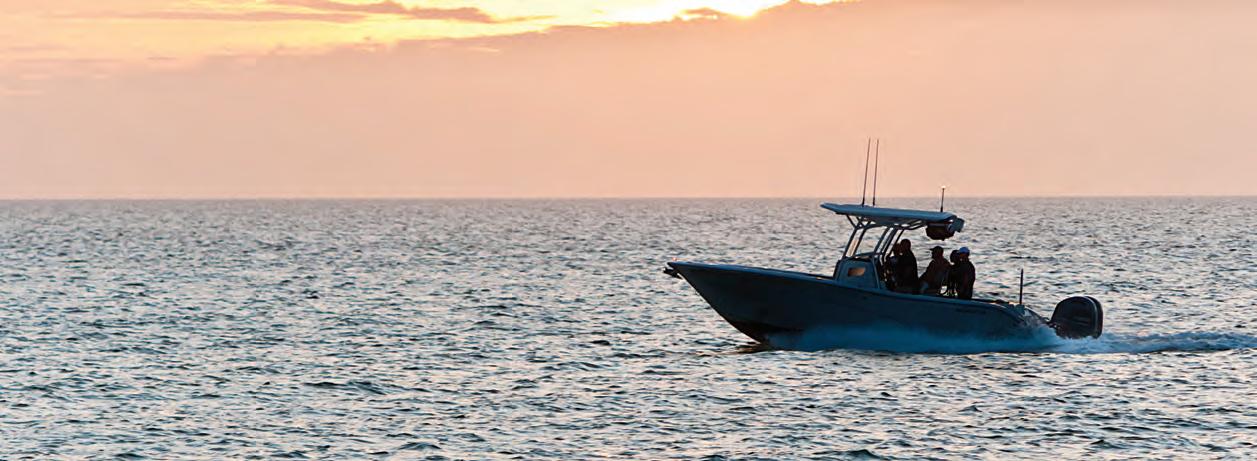
Are you ready to embark on your next on-water adventure? Before you set sail, here are fve things to know about boat insurance.
1. Boat insurance isn’t just for accidents
With comprehensive coverage, you’ll also be protected fnancially for theft, vandalism, and unexpected events like storms if you need repairs or replacements due to damage.
2. Accidents can happen to anyone
When accidents happen, boat insurance offers liability coverage for damages or injuries you cause while boating, up to specifed limits. It can also cover lawsuit costs if you’re sued.
3. Boat insurance can cover medical payments
Boat insurance offers a range of optional medical payments coverage limits, helping to cover medical expenses if you’re in an accident or someone is hurt on your boat, regardless of fault.
4. Most lenders require boat insurance
If you fnanced your boat, you’ll likely need boat insurance since most lenders require boat insurance to protect their investment. Additionally, some marinas or municipalities require proof of insurance for docking.
5. Progressive offers specialized boat coverages
Ever worry about getting stuck on the water?
Progressive’s Sign & Glide® On-Water Towing coverage** can help. It’s an additional coverage that steps in if your boat is disabled or breaks down on the water, paying for on-water towing, jump starts, soft ungroundings, and fuel delivery. Fuel cost isn’t included.
Don’t let unforeseen circumstances disrupt your voyage. Cruise with confdence thanks to Progressive Boat insurance. Because when it comes to your boat, peace of mind is the ultimate luxury.
Scan to get a quote in as little as 4 minutes.
to learn more.



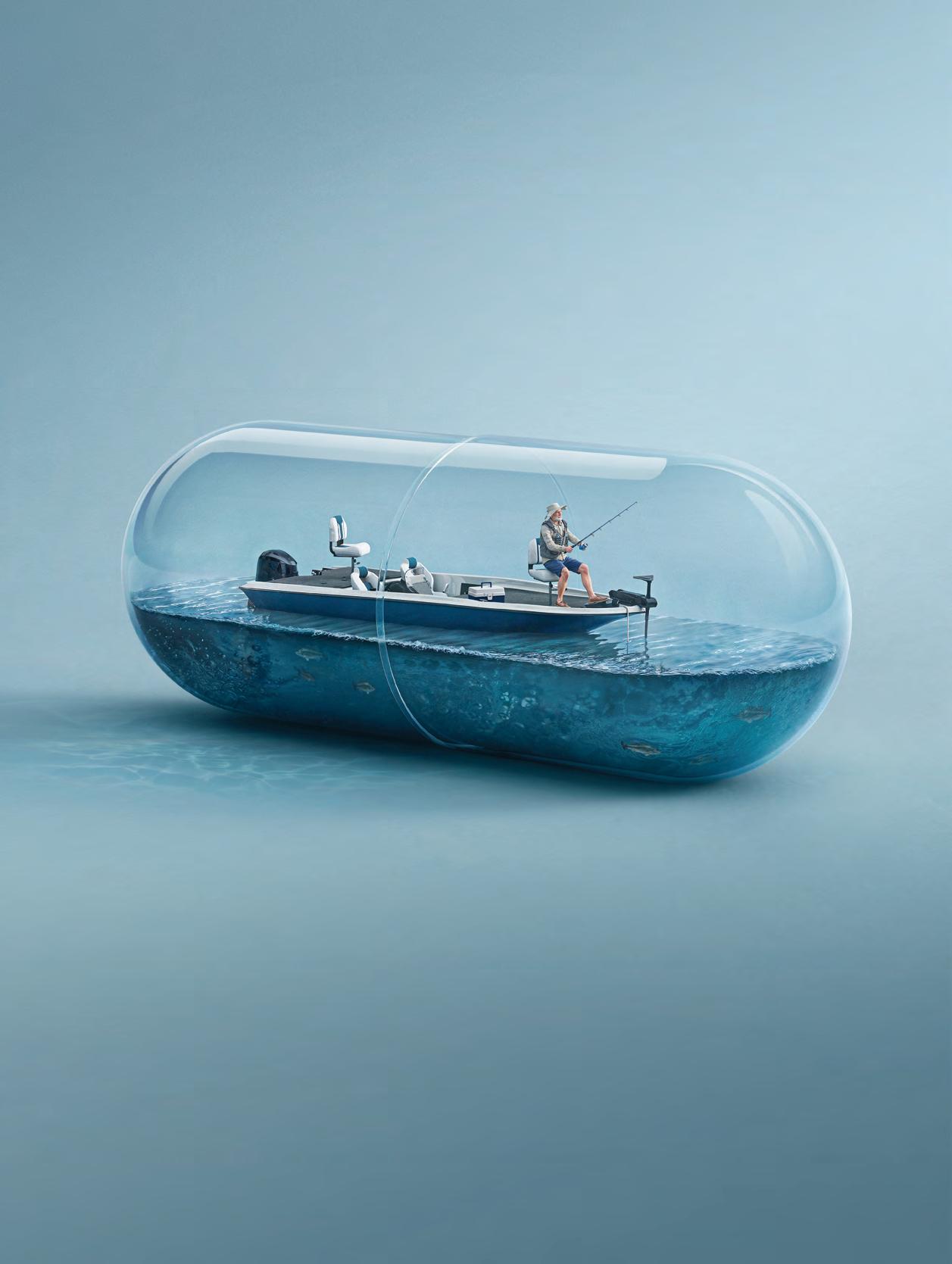
















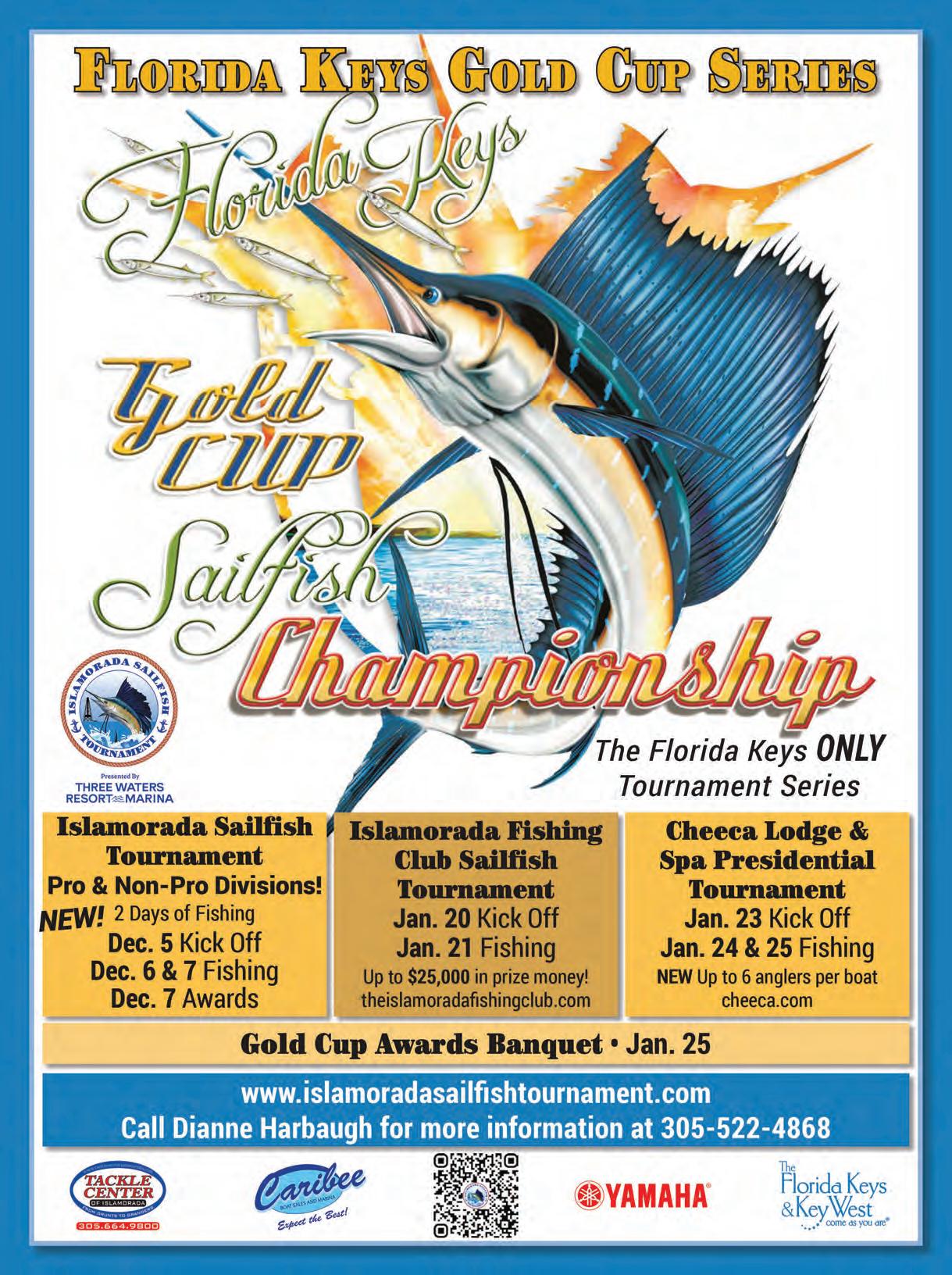


There’s remote, and then there’s Pulley Ridge. Sitting over 100 miles o! the coast of Florida, this underwater plateau is where the Gulf of Mexico drops into the deep blue, and it’s earned a legendary reputation as one of the most productive, and challenging, shing destinations in the U.S.


By Astrid deGruchy
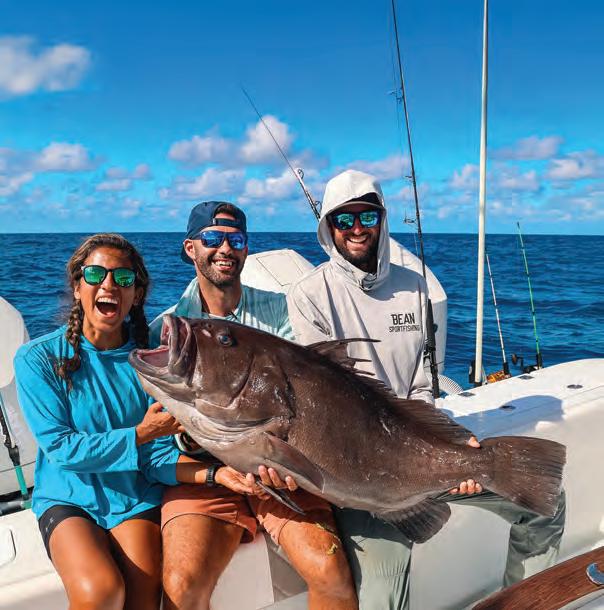

If you’re heading out there, you’ll need a serious o!shore machine. ink a 47’ Freeman or a Viking, something that can handle the long run and unpredictable Gulf conditions. is isn’t a trip for small center consoles or light tackle. Last time we were out there, we loaded up with PENN Fathom electrics paired with PENN Ally Electric rods & PENN International 50 VISX ready to drop into depths that test both your gear and your patience.
Using chicken rigs, we hauled in vermillion and yellow snappers in over 500 . of water that lled the box, but Pulley Ridge has a wild side where giant groupers and the occasional “what-the-heck-is-that” monsters lurk in the dark.


Pulley Ridge isn’t just another shing trip, it’s a rite of passage. e distance, the depth, the unknown, it all adds up to one of those bucket-list adventures every angler should do once in their life, especially with a crew of buddies who live for the chase. While you’re out there, you can even make a stop at the Dry Tortugas, another incredible o!shore destination rich in history and beauty.
Check out the full Pulley Ridge expedition on YouTube, only on Bean Sport shing TV.













By Julie Graham
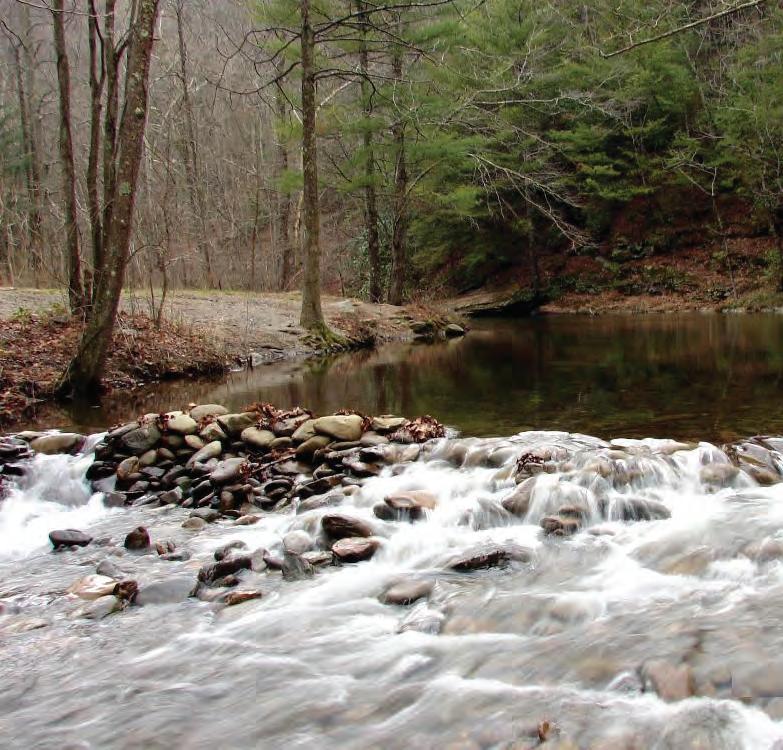
The Cherokee National Forest o!ers some of the best freestone trout shing in the Southeast. Spanning 650,000 acres across the Southern Appalachians, it’s the largest block of public land in Tennessee and it’s divided neatly in two by the Great Smoky Mountains National Park.
On the north side, mountain streams tumble through hemlock hollows toward Cosby. To the south, the waters of Citico Creek cut deep through wilderness ridges near the Unicoi Mountains. Together, they showcase the Cherokee’s range. From roadside creeks to backcountry runs, the forest o!ers anglers a taste of freestone Tennessee trout water.
Below the Great Smoky Mountains National Park boundary, Cosby Creek winds through the community of Cosby, Tennessee, o!ering accessible trout
water without the added park permit. ese lower stretches are regularly stocked by the Tennessee Wildlife Resources Agency (TWRA) and can provide productive shing throughout spring and fall. While access is somewhat limited, anglers will nd several bridges and pull-o!s along Highway 32 where they can wade in. e streambed is rocky and slick, with plenty of boulder pockets and undercut banks—good traction and careful footing are essential. Expect stocked rainbows with the occasional brown trout.
Inside the Park, the Cosby Campground section is ideal for bank shing and light wading, especially for those who prefer easy access close to trails and picnic areas. Brook trout dominate the upper reaches, while rainbows hold in the deeper pools below.
To the south, Citico Creek drains more than 20,000 acres of rugged country on the western edge of the Cherokee. Fed by the north and south forks rising in the Unicoi Mountains, Citico o!ers a blend of stocked and wild trout water—ideal for anglers who like a mix of easy access and adventure.
e TWRA regularly stocks Citico from Little Citico Creek to the Citico Creek Wilderness boundary, while the upper forks hold self-sustaining populations of wild rainbows and browns.
e Cherohala Skyway marks the southern edge of the Citico Creek watershed, and just driving it is worth the trip—sweeping vistas, ery fall colors, and the sound of water around every bend.
Autumn is prime time on both sides of the Cherokee National Forest. Water temperatures drop, trout feed hard before winter, and the hardwood ridges turn to ame.
• Match the Hatch: Early fall favors terrestrials; in November, go small with blue-winged olives, midges, and caddis emergers.
• Go Light: Clear, low ows call for 6X or 7X tippet and longer casts.
• Mind the Leaves: Dri leaves can snag a line—look for deeper pools below ri&es where trout hold under cover.
• Start Late: Cooler nights mean shing o en improves mid-morning as the water warms slightly.
For more information, including licensing regulations, visit the Tennessee Wildlife Resources Agency at https://www.tn.gov/twra.html.


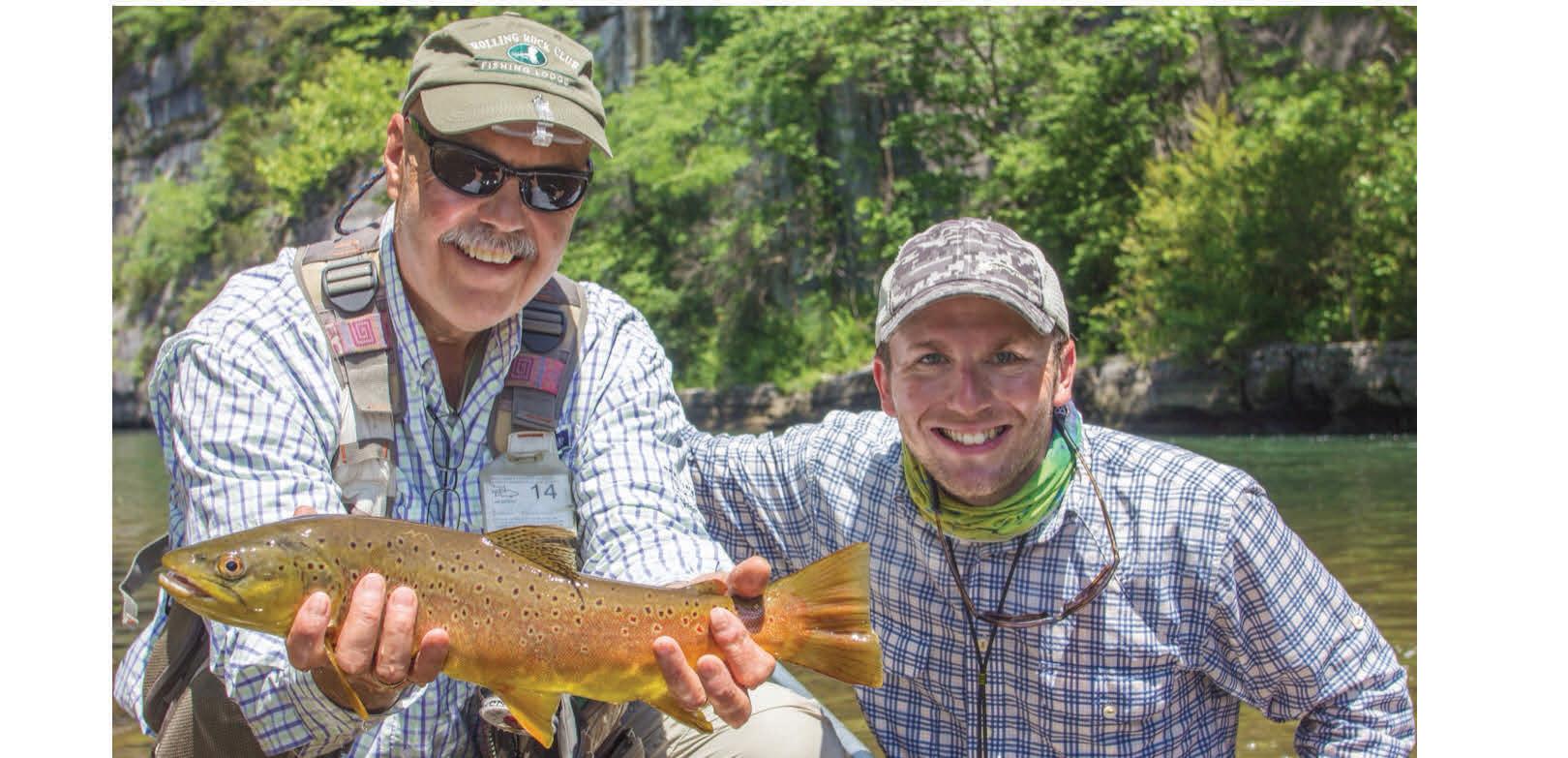































































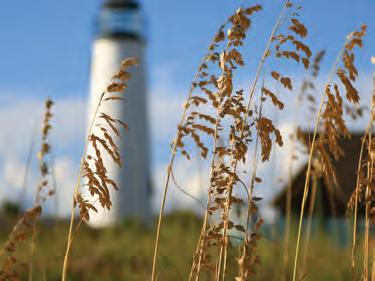







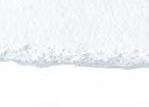
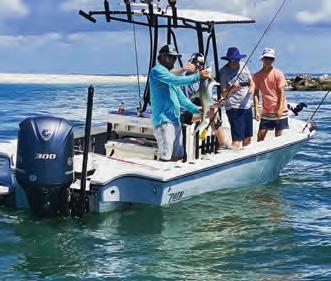





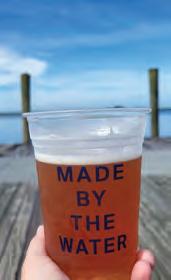
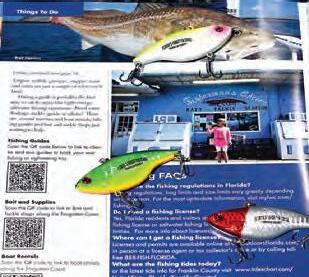












By Capt. Michael Okruhlik
There’s just something magical about fall shing. e air cools, the bait thins out, and everything that swims gets a little hungrier. For me, it’s the holy trinity of the season— ounder migrations, trout and reds chasing shrimp under screaming gulls, and the early whispers of trophy trout time.
The Fall Flounder Run
Ah, yes, the famous fall ounder migration. is is more prevalent in some areas, but they can be caught all along the Gulf Coast. ese at ambushers stack up near the passes as they make their way to spawn in the
Gulf, gorging on bait along the way. When I’m targeting ounder, I switch things up. My go-to is a scented so plastic, preferably the Titan Series from Knockin Tail Lures. Not only are they scented, but they also have a rattling tail. Working this along the bottom will entice violent strikes. Since ounder love to bury themselves and wait in ambush, I keep that lure tapping bottom, twitching my rod sideways, whether I’m wading or boating. It’s a nesse game—part patience, part persistence—and when that telltale “thump” hits, it’s pure satisfaction.
Birds, Bait, and Mayhem
en there’s the chaos of gulls dive-bombing over shrimp and schooling sh—a sight that’ll make any angler’s pulse jump. Fall o en brings bigger trout into the mix, turning every cast into a thrill. I prefer to use a heavier jighead (1/4 to 3/8 ounce) to achieve the desired action without spooking the birds or the sh. Durable so plastics help keep me in the ght longer, and I mash the barbs down for quick releases and faster re-casts. When the schools settle and the birds thin out, a topwater lure can coax the bruisers to rise— and few things beat watching a big trout explode on the surface.
As fall rolls on, my focus shi s toward trophy trout—and timing becomes everything. I’ve followed solunar shing tables since childhood, back when my grandparents’ calendars marked “good” and “poor” shing days with little sh icons. Over the years, I’ve been both a believer and a skeptic, but I’ve noticed a pattern: my best bites o en align with solunar peaks. Now, I plan my day around them. Instead of running and gunning, I’ll anchor in a promising area during a predicted feeding window and wait it out.
On a recent trip with my boys, we missed the morning bite but stuck it out for the next solunar cycle. We anchored near a grass edge meeting a sandy at and, right on cue, rods bent. For seventy glorious minutes red sh hit every few casts, and sometimes we doubled up. My sons were smiling, the drag was screaming, and the solunar chart earned another believer that day.
So as the air cools and the sh feed up, grab a rod, bring a kid, and let the tides—and maybe the moon—guide your next adventure.
Capt. Michael Okruhlik is the inventor of Knockin Tail Lures,® and the owner of www.MyCoastOutdoors.com.




Mastry Engine Center has received the Suzuki Marine Super Service Award and has been ranked #1 in Suzuki Marine US Sales! 60 YEARS OF REPOWER EXPERIENCE!

RePower Packages designed to best ft your needs and not stretch your budget.
Financing available.

Rest assured, all Mastry Suzuki RePowers are backed by Suzuki’s industry leading 5-year factory warranty.

Stationed strategically around the East Coast, all Suzuki RePower Centers have achieved the highest level of Suzuki certifcations to meet and exceed your repower needs.
When Considering A Repower, Consider These Factors:
•Every Authorized Mastry Suzuki RePower Center has decades of repower experience providing proper rigging, controls, propeller matching and in water testing
•With a Mastry Suzuki RePower, owners gain improved performance, less noise and greater reliability
•Mastry Suzuki RePower’s exclusive Owner’s Edge Program*
•Mastry Suzuki RePower Centers use authentic Suzuki OEM parts and have factory certifed technicians

Since 2014, Mastry Engine Center, has been building the premiere Suzuki Outboard repower network in Florida. Today, Authorized Mastry Suzuki Outboard Centers have been exceeding expectaions in the Southeast for over two decades. Recently Suzuki Marine requested Mastry Engine Center to expand the network throughout the Northeast. Now boat owners from Maine to Florida can be assured of the best support for their Suzuki outboard repower project. All Authorized Mastry Suzuki RePower Centers provide the best options, information and package pricing for excellent performance in repower.




When you purchase a new Suzuki outboard from an authorized Mastry RePower Center you qualify to become a member of the Mastry Suzuki Owner’s Edge. Owners receive an identifcation card that provides them with important information about their Suzuki outboard motor as well as a passport to additional benefts during ownership. Members enjoy a detailed engine maintenance schedule, Mastry Suzuki RePower Trade Program and special pricing from Mastry Suzuki Partners *Get with the Program!
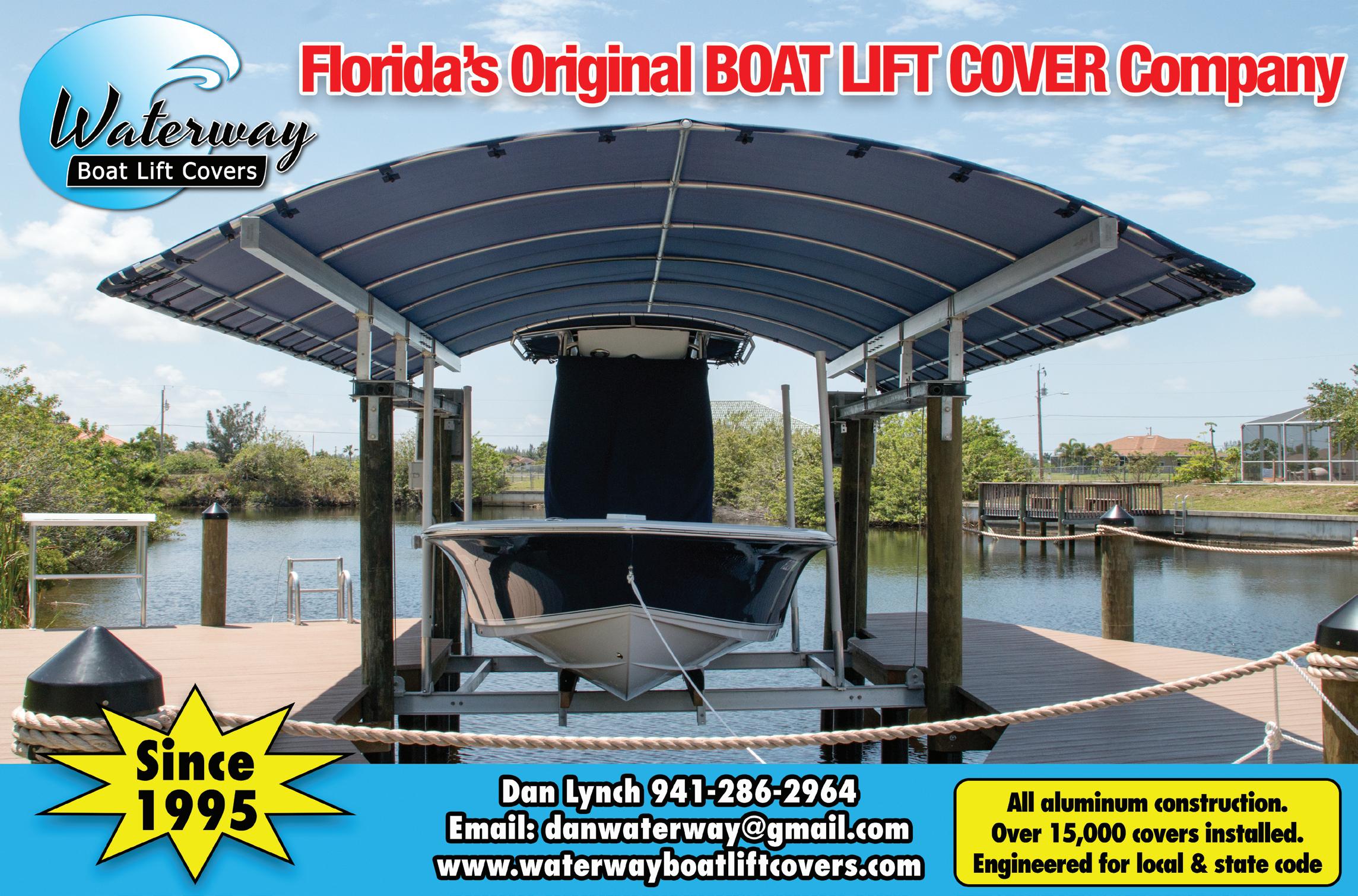

In the world of watersports and outdoor lifestyle, staying connected to what’s next isn’t optional—it’s essential. For 50 years, Surf Expo has been where the industry comes together to discover new products, make connections, and set the tone for the season ahead.
Returning to the Orange County Convention Center in Orlando, January 7–9, 2026, Surf Expo celebrates its 50th anniversary with an event that honors ve decades of driving the business of the waterman lifestyle forward. e show draws thousands of quali ed retail buyers, brands, and industry professionals from across the U.S. and around the world.
Surf Expo has long been the industry’s launchpad for what’s next. It’s where new brands make their debut and where trusted names unveil their latest collections. On the show oor, sustainability, functionality, and style continue to drive the next wave of coastal and outdoor retail—trends that shape what ends up in your store and, ultimately, in the hands of your customers.
Re ecting the growing connection between coastal and outdoor lifestyles, Surf Expo’s Shoreline Outdoor area continues to expand— bringing together products designed for life on the water and adventures on land. is growing segment highlights essentials for outdoor adventure, from versatile apparel and gear to innovative accessories that move seamlessly from coast to camp.
Shoreline Outdoor features brands and products that bridge categories—boating, shing, paddling, hiking, and camping—meeting consumer demand for versatility and performance. Retailers will nd quality, functional, and sustainable products built for modern outdoor enthusiasts. ink waterproof bags, insulated coolers, portable re pits, backpacks, multifunctional jackets, and drinkware designed for any setting. is lifestyle focused area captures the spirit of adventure—friends gathered by a re pit a er a day on the water, paddleboards pulled up on the sand, or cozy campsites under starlit skies. It’s all about embracing the outdoors in every way.
What makes Surf Expo such an essential stop on the retail calendar? It’s the unmatched variety. Hardgoods, apparel and accessories that bridge the gap between beachwear and everyday wear, Surf Expo delivers products that de ne coastal and outdoor living. Whether your customers are anglers, surfers, paddleboarders, kayakers or simply love the water or the outdoors, you’ll nd fresh lines and innovations that resonate.
Surf Expo remains much more than aisles of product—it’s a place to learn, connect and recharge your business strategy. Educational sessions, in-booth demos and networking events o er valuable insights into consumer behavior, merchandising and market trends.
Join them January 7–9, 2026 as they celebrate 50 years of Surf Expo— and experience rsthand why this show continues to be the heartbeat of the coastal and outdoor lifestyle industry.
Quali ed retail buyers register for free before 12/24 at surfexpo.com

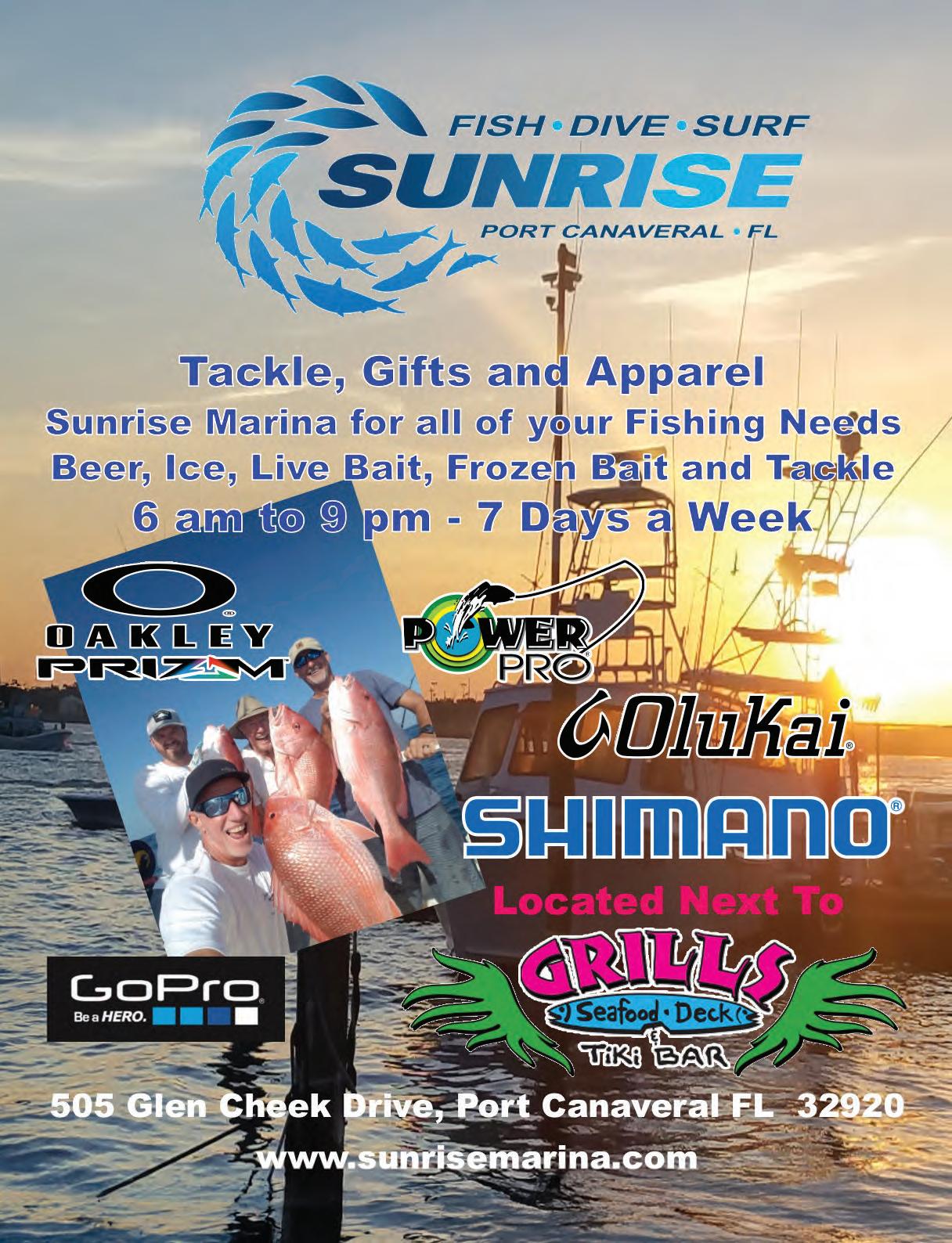



N1W
ovember will provide anglers with a plethora of opportunities. The cooler temperatures will bring new players into our fishing game, and anglers will be able to pick and choose what they would like to target. Bluefish, Spanish mackerel, pompano and tripletail will join the usual suspects (snook, redfish and tarpon) along our coastal waters. These new species are generally very easy to target with lures like the Rapala X-Rap or 1/2 ounce crocodile spoons. Troll or cast these along the beaches where mullet or glass minnow schools are found and you should feel the bite of a Spanish or bluefish rather quickly. For the pompano, try using sand fleas, and the tripletail will normally strike live shrimp or small baitfish like fingerling mullet or pilchard on a light jig head near floating debris and buoys. Of course, redfish, snook and tarpon will still be available for big game anglers that like a good tug-of-war challenge.
In the Banana River, black drum will join the speckled trout, snook, baby tarpon and redfish we’ve been catching on the lagoon flats. These drum love to eat live shrimp or cut crab. The other species will strike topwater lures, Saltwater Assassin soft plastic jerk baits, and Assassin 4-inch sea shad tails as they search for a meal near mangrove covered shorelines and docks in these intracoastal waters.
The November weather is great, and the fish are happy so it’s time to get out and get your rod bent. If you need help finding any of these fish species, please feel free to book a charter with me and we’ll get out there to catch your next memory!






The Evergades 315CC seamlessly combines advanced engineering with elegant creature
Designed for serious anglers and boating enthusiasts, this
offers exceptional performance, innovative features, and unparalleled fishability.







November is a great time of year for fishing. The offshore really starts to get Fired Up, so to speak.
Bunker are normally in the basins more consistently, and much easier to get. Remember to use that large heavy sinking net. If you still can’t locate or catch them, you may have to resort to that box of frozen cigars, But don’t worry, they work just fine. Just head out to the reefs or ridge and start from there for many species like kings and blackfins or even sails. Typically, this time of year we also see a daily clean line (where the water goes from muddy to clear). Fish that clean water side break and you should do just fine. Normally Thanksgiving is that time frame where everything really turns on, but typically this whole month is a “FireFight.” The typical stinger wire rigs work well with a size 4 treble hook. Go see Nick at the Fish and Dive Shop and he’ll hook you up with whatever you need along with some great looking fresh cigar minnows. He’s also carrying live bait now, croakers and pins. They have a great tank system in place. I would call ahead of time to make sure though so he can order if needed. Other species that show up well are mahi and wahoo. There’s no secret here to this kind of fishing. Use your normal ballyhoo rigs and smaller chuggers and find your weed lines, edges or just fish the stream. The fall run can be just as good or better than the spring run. Anything will be better than this year’s spring run honestly! If you’re looking to keep busy if it’s too rough
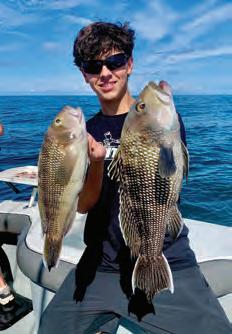
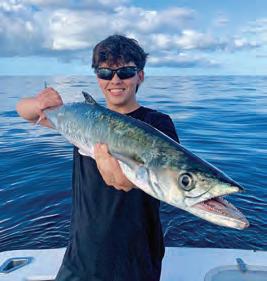

to go out, fish the jetties with some live mullet or live shrimp, use a small knocker rig or even a split shot. Fluorocarbon is not a bad idea either. Snook and redfish have been doing well and should continue to “Fire.”
Most of all, Happy Thanksgiving and I hope we all have a great rest of the year fishing. Be safe out there.
CAPT. CHRIS CAMERON
Fired Up Fishing Charters firedupcharters.com
sharkfishingcocoabeach.com (407) 222-3573




Capt. Glyn Austin
Capt. Lukas Brickweg
Capt. Chris Cameron
Capt. Scott Goodwin
If
love the outdoors and dream of being in business for yourself, now is the perfect time to choose a Coastal Angler or The Angler Magazine Franchise.


Charlie McCullough
Capt. Jim Ross
Capt. Michael Savedow
Capt. Jamie Thrappas
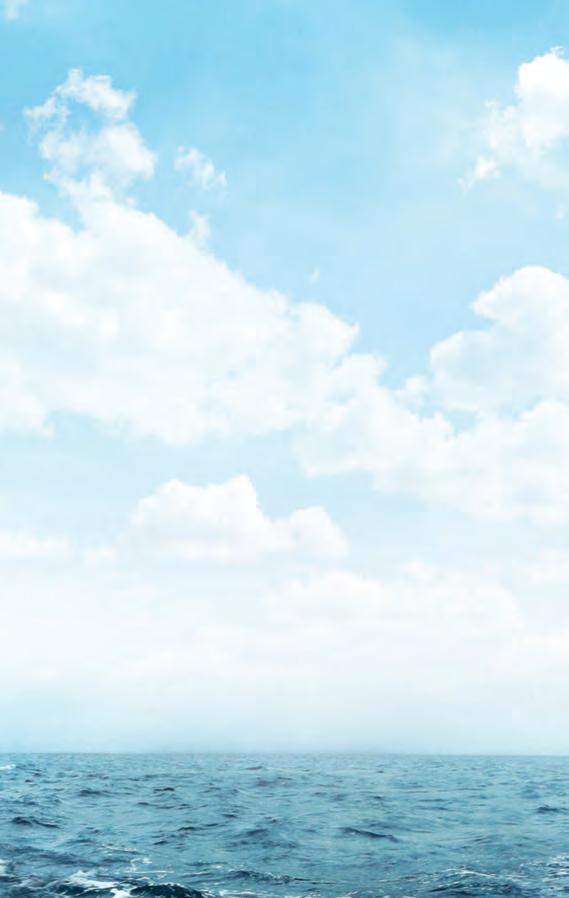
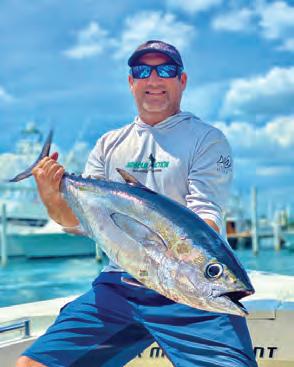


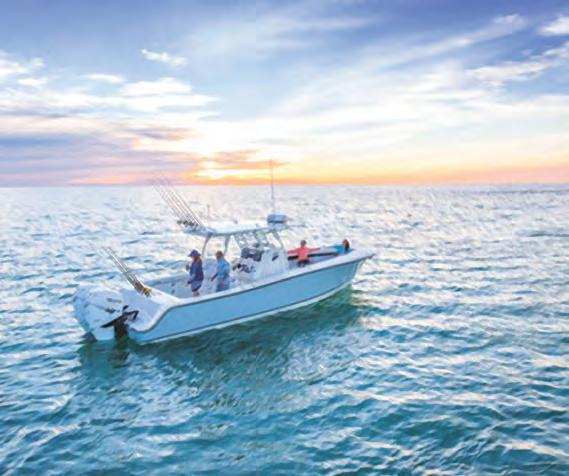


Water levels are high right now in the St Johns River and the current is fast moving. Fish have many places to hide. Spawning season started in late September, currently large females will congregate the St Johns River, and can be found in 6-12 feet of water (in the lakes) as males prep the beds. Crappie will be the early target species for Derby anglers, American and Hickory shad show up around Christmas. Bass will begin their fattening up during pre-spawn with male buck bass found in shallow water before the full moon. Big female bass will be nearby in deeper water next to the males. Blue channel catfish will be found in deep holes on the downstream side of river bends.
November generally yields the winning crappie in the Derby. It is a little early to find them on the channel edges along river bends - deep river bends don’t typically produce big fish until after the second cold front. In Lake Monroe and Lake Harney, you’ll find folks drifting minnows under a bobber on windy days – same for Jessup. During the full and new moon phases the lily pads near deep water will be the place to find slabs. For the folks trolling, speed matters. Longline works best in the 1.0 to 2.0 mph range, a little slower for spider rigging .5 to 1.2 mph. Jig colors and depth are also a big factor. Set your baits at different depths and change colors until you find what the fish prefer.
Plano has released their simple tray tackle box again, just in time for the holidays. The 2-tray
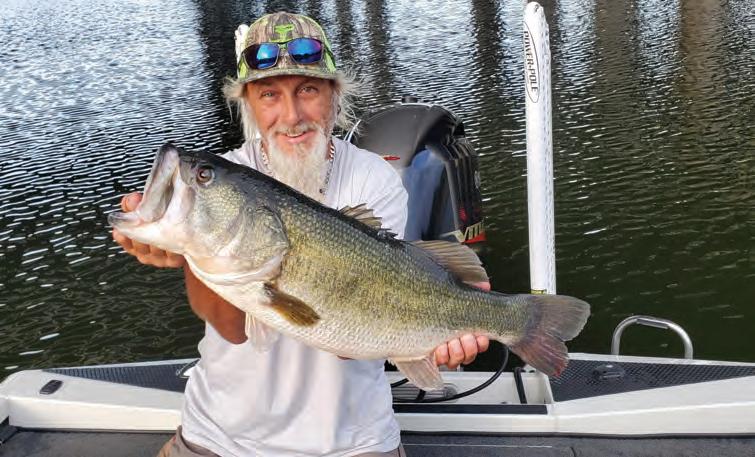
model is perfect for holding crappie lures - you can fit all your soft plastic colors plus weighted jigs and more. Crappie jigs that work great in the Derby: 2” curly tails in all colors, Roadrunner lures, mylar jigs, and ice jigs. Colors: Pink, green, chartreuse, red/white, black, blue/white, yellow, orange, purple, and combinations thereof. Always tip your jig with a live minnow.

Benny Widerman with his first bass over 10 lbs...10.60 to be exact. She ate a Zoom Junebug trick worm, and was released safe and unblemished after getting weighed and pictured.
And don’t forget to sign up for the 17th Annual Shad and Crappie Derby! Visit coastalanglermag. com/orlando/shad-crappiederby/ for complete information.
CHARLIE McCULLOUGH
Coastal Angler Magazine charlie@coastalanglermagazine.com


Tired of worrying about your cell phone slipping, falling, or getting damaged while you’re out on the water?
Hold Fast Pro provides the must-have boat accessory that gives you exactly what you need—a STRONG HOLD and FAST ACCESS to your cell phone.
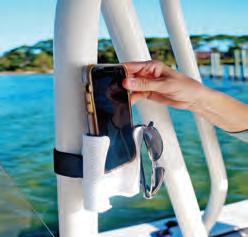
Built to handle the water, salt, and sun, our adjustable boat phone holder boasts a secure design, versatile features, universal fit, and the ultimate in durability and convenience.
By Capt. Scott Goodwin

Here at Marker 24 Marina, we try to always have live shrimp available for our local anglers because a fresh live shrimp can often make all the difference in a day of fishing. The shrimp we carry come from the Gulf and are gathered, tended to, and transported across the state by Michelle’s Live Bait LLC. We wanted to learn more, so we gave Michelle Wasson a call, and she educated us on the process of providing great live bait.
“I grew up in New Orleans, and my family has been involved with seafood in various ways for a long time”, said Michelle. “I have been in the live bait shrimp business for 15 years, but Michelle’s Live Bait is in its 6th year as our own venture. My husband and I decided to give it a
go, and while it’s a dying industry due to a variety of factors, I love it and will not give up.”
Orders for live shrimp are placed by customers on the East Coast, and the shrimp are caught up and down the west coast of Florida from Hudson Beach to Homosassa. Michelle’s company does not own any boats, but they have three trucks rigged with 500-gallon tanks filled with aerated saltwater. “We take the orders and call the shrimp captains”, explained Michelle. “They leave in the afternoon and drag their trawls in the dark until they can fill the order, often at 3 or 4 in the morning. That’s when we pull up to the boats and give them the bags and they weigh the live shrimp, and place them in the tank trucks. It
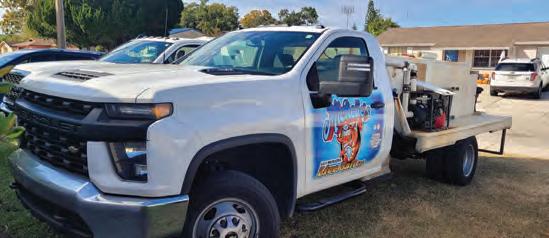
takes a lot of coordination to bring it all together. Then we head across the state to distribute our shrimp to a variety of bait shops and marinas.”
When asked about how the seasons and conditions affect their business, Michelle commented, “The seasons have a huge bearing on the success of the boats. Summer is tough because the hot water temperatures cause the shrimp to move deeper. Often, the shrimp are smaller in the summer, but come fall, they catch bigger ones until the water gets really cold and the shrimp bury up. Moons also have a pull on the shrimp, though it varies because there are many factors in play.”
Michelle lamented that the number of orders per year has dropped steadily over the years, but is optimistic for the future and fully committed to making the business a success! “I really have to thank my boat owners, captains and deck hands as they make what I do possible”, said Michelle. “Also my own drivers and great customers, It’s a team effort!”
Marker 24 Marina is located on the Banana River at 1357 S. Banana River Dr., Merritt Island, FL 32952. Contact them at (321) 453-7888, marker24marina@gmail.com, or visit marker24marina.com.



November’s inshore fishing opportunities will really start to feel like fall in Central Florida. Water levels should still be up from October’s tropical encounters, but the first of real cold fronts will be pushing further and further south, cooling river temps and triggering the need to feed and stock up for the winter.
The mullet run in the Banana has been leaner than expected, but we’re hoping that some pilchards and threadfin herring will fill in as they are one of our favorites for live baiting mangroves and structures for reds, snook and trout. Croakers and pinfish are another option if you can catch or buy them. Lures will also take their share of the action, and they let you cover more ground than live bait fishing. Live and frozen shrimp or crabs will also be a good option for black drum and sheephead, as they tend to like cool water temperatures.
The bigger tarpon of summer seem to be moving on, but juveniles will stick around, patrolling the edges of the flats and rolling in canals and backwater creeks, as they do year-round.
It’s a great time of year to fish, so good luck when you go!
CAPT. SCOTT GOODWIN

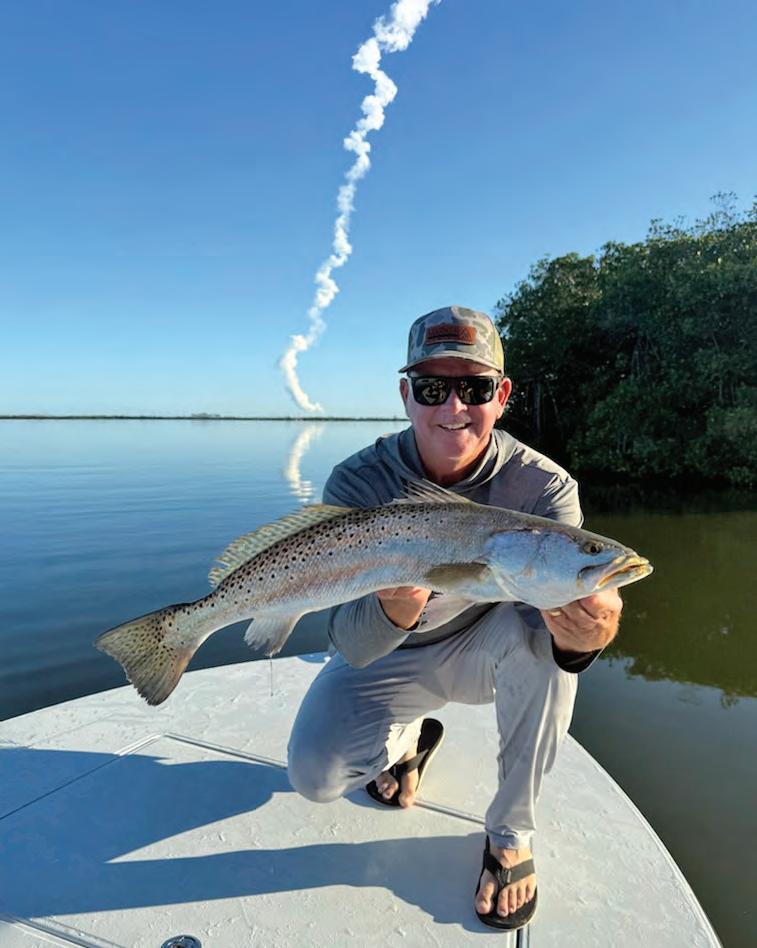
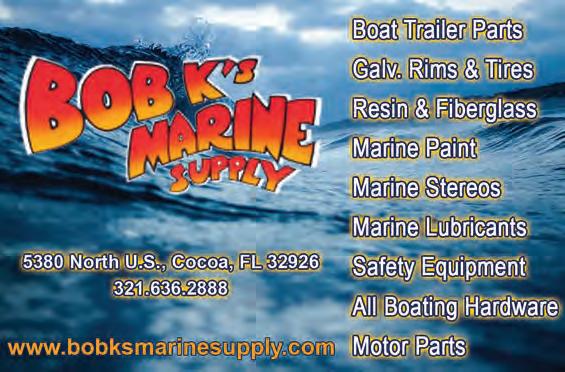


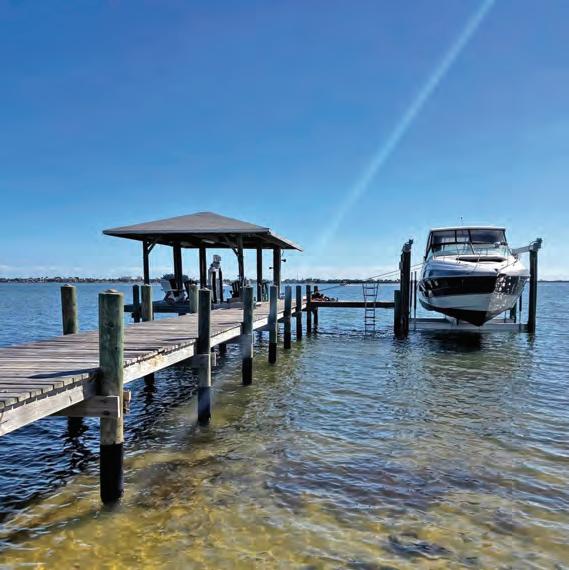
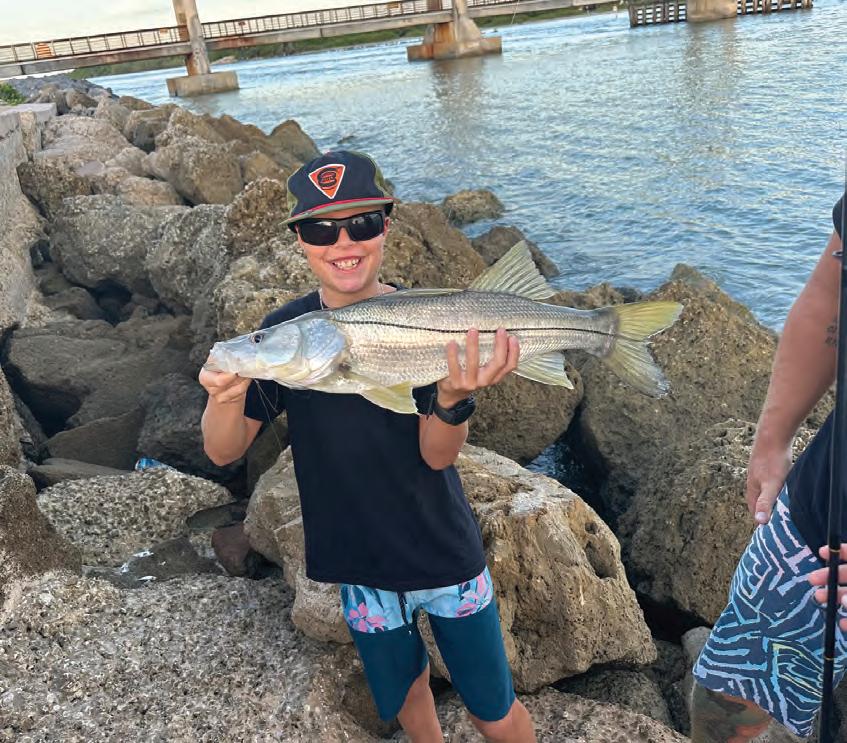
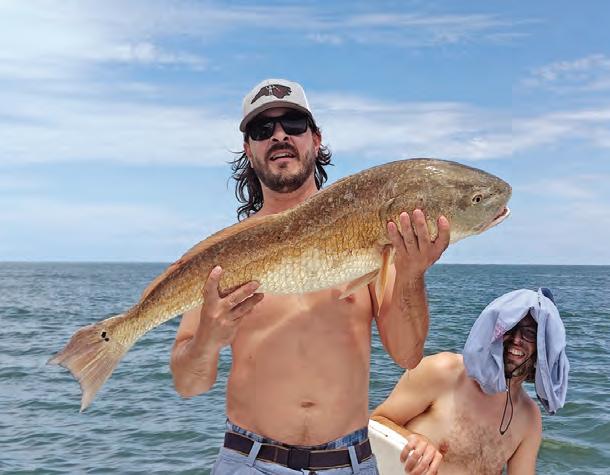

Caught vertical fishing offshore, Christopher Burdette said his 25.5 lb. bonita is the biggest one he‛ s ever seen.


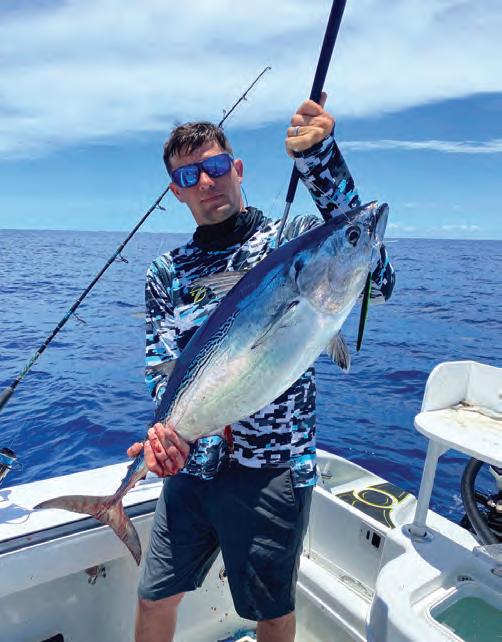
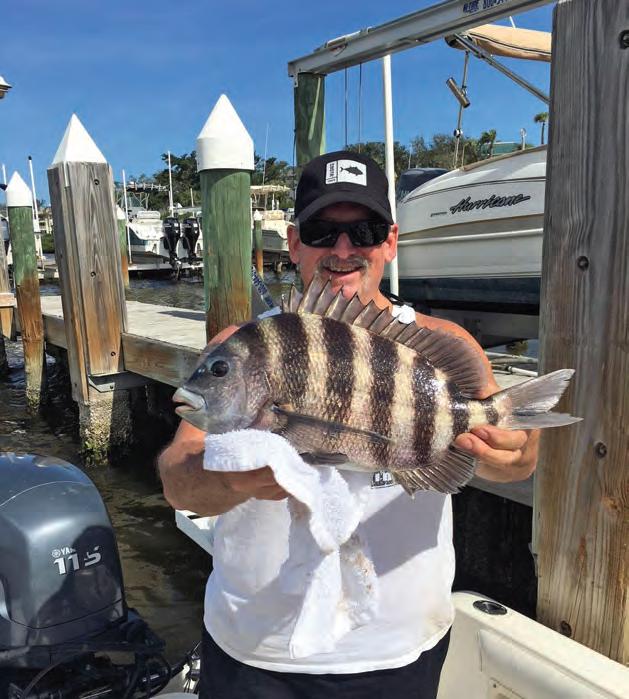

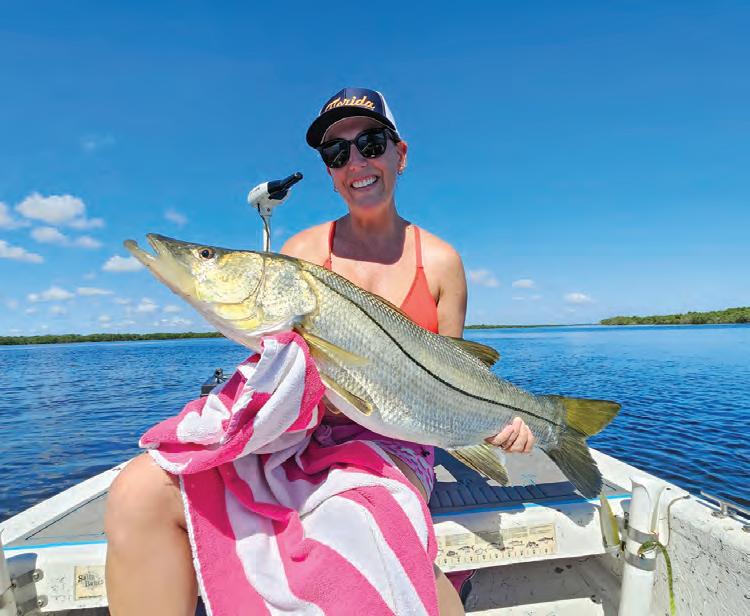





While setting the anchor to fish an oyster bar off the point of a dock, Cory Park saw the distinctive long bottom ray on the dorsal fin of a tarpon as it was breaching the surface. He hooked a dead pinfish through the lips and retrieved just under the surface while simulating a distressed baitfish. On the second cast, the 37-inch silver king nailed it!
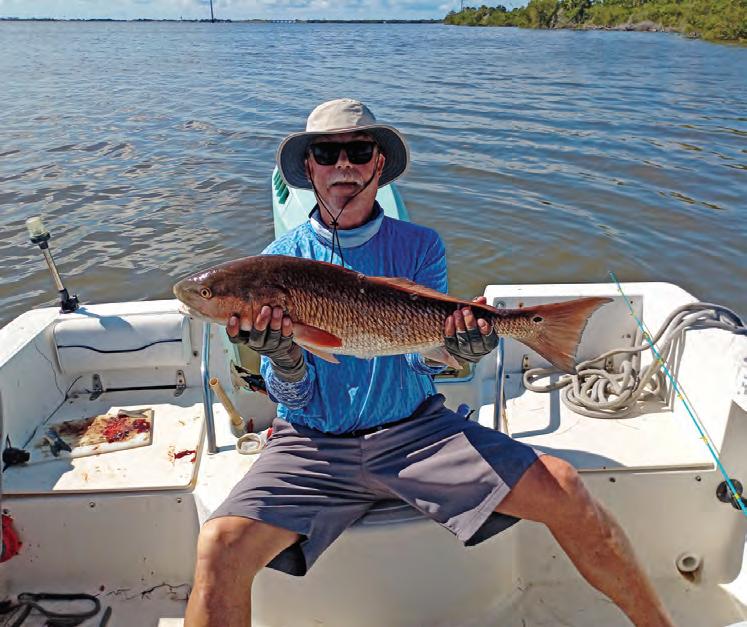
Bill Baker nabbed this 30-inch redfish while fishing aboard ”Lollygagging‟ on the Banana River.
Andrew Phillips won the genetic lottery with a super rare 26-spot trophy redfish caught in Mosquito Lagoon using chunk bait. GET YOUR BRAGGIN’ ON! Upload your high-quality photos (at least 1MB) with all the catch details at:
We have had a ton of rain September and October and the mullet run was slower than normal, however the water in the lagoon has risen quite a bit, the temps have lowered and the fishing was pretty decent through early October. Plenty of slot as well as over- and under-slot snook have been on the mangrove shorelines and spoil islands holding bait. There has also been good numbers of slot and over-slot redfish (which are still closed in our waters) and plenty of trout over 20” with some 28” fish caught. It’s the best time of the year to get a quality slam in the boat with snook, redfish and trout.

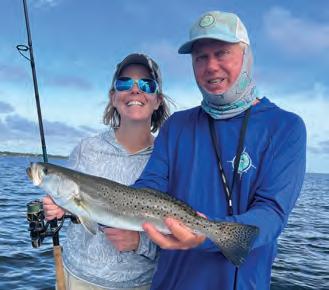
With the mullet run a bit late and the lack of tropical storms, the fishing should stay good through mid to the end of November in the Indian River Lagoon and on the nearshore beaches from Melbourne to Sebastian Inlet. Even with less tropical storms this season, the rain has been intense. Water clarity hasn’t been good, but the fishing has been decent as long as there’s bait around. Hopefully the rains slow and the salinity and water clarity increases.
Inlet fishing should be pretty good in November as long as the bait is consistent and we

don’t get too many cold fronts. Plenty of snook, redfish and jacks, as well as a few tarpon and sharks, should be hitting live baits during the day and eating lures at night. Anglers at Sebastian Inlet will still be able to fish the rocks west of the
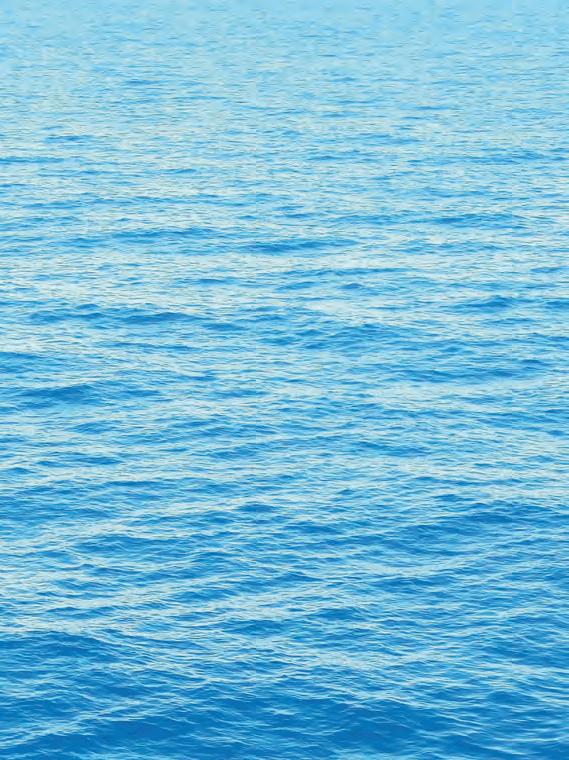
jetty as well as the catwalks and west of the catwalks along the rocks. Bucktails, Rapala X-Raps and Hogy Eels should give anglers throwing artificial plenty of action. November is also the time anglers start catching the big flounder in the inlet west of the bridge as well as in the lagoon, but if the mullet run hasn’t improved and the grass has all died again, the flounder fishing will be a bit slow. Live bait anglers looking for big flounder in the inlet will have the best success with live finger mullet and mud minnows soaked on the bottom. I prefer to jig 1/2 ounce or 3/4 ounce jigs with D.O.A. paddletails or 4” jerkbaits on the bottom using either Pro-Cure or strips of mullet or pinfish as an attractant
Pompano will be on the flats from Grant down to Sebastian as well as around the inlet, and should be along the beaches near the inlet. Goofy jigs, MirrOlure Lil John or D.O.A. jerkbaits will work well when targeting pompano. We even will get some on hard baits as well.
CAPT. GLYN AUSTIN Going Coastal Charters www.goingcoastalcharters.com (321) 863-8085

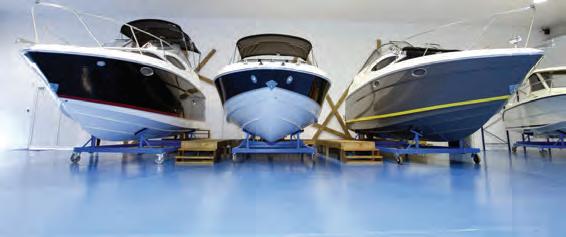














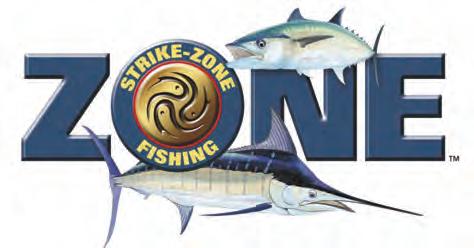



November is a transitional month on the Space Coast, and the fishing conditions change quickly as the weather shifts. The first cold fronts of the season push fish like pompano and whiting closer to shore, while bluefish, sharks and jack crevalle remain abundant. Our guides keep a close eye on water temperatures and conditions to adjust strategies for optimal results.
Fishing in November is all about reading the water and tides, as we say at Cocoa Beach Surf Fishing Charters. A clean, blue/green water color will increase your chances of success, especially when targeting pompano and whiting. But when conditions change, such as murky water after high seas or south winds, it’s important to adjust your approach.
Marine


Key tips for this time of year include fishing the first and second sandbars, as well as concentrating on incoming tides when fish tend to move closer to shore. This is especially important for anglers that lack the equipment and expertise to cast beyond the outside sandbar.
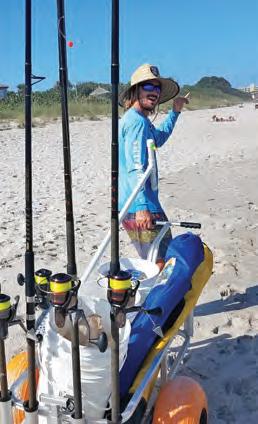
• Melbourne & Indialantic: This area offers reliable action for species like whiting, croaker, and the occasional keeper pompano. Anglers should focus on the first trough or near sandbar cuts with light tackle rigs—size #2 to #4 hooks work best for whiting and croaker. For black drum, try using cut baits or blue crab knuckles fished deeper in the trough zones. In addition, Fishbites artificial scented baits paired or stand alone work great for the species listed above.
• Cocoa Beach: Cocoa Beach is undoubtedly one of the top surf fishing destinations in November. With its consistent catches of pompano, whiting and bluefish, along with increased shark activity, this area offers something for everyone. We recommend running a mixed setup—light tackle rods for whiting and pompano, and heavier rods rigged with cut bait or shark rigs for bigger fish like bluefish and sharks. When you fish Cocoa Beach, it’s all about versatility. Fishing near the jetty or troughs is often productive, but be sure to look for areas with clean, clear water for the best results.
Baits: Fresh shrimp, sand fleas and FishBites are excellent for whiting and pompano, while bluefish and sharks are best targeted with cut bait, such as mullet or menhaden. Our guides recommend using lively baits, especially around the sandbars and troughs where predators tend to hunt.
Timing: The two hours before and after high tide are prime feeding times for surf fish. Early morning and late afternoon also tend to offer calmer conditions, making it easier to spot fish.
For those looking to make the most of their surf fishing experience, it’s best to book with the local expert, Cocoa Beach Surf Fishing Charters. Our team of seasoned guides specializes in adapting to the ever-changing conditions of the Space Coast surf, ensuring clients are fishing at the right locations and with the best rigs and baits.
Booking a guided trip with Cocoa Beach Surf Fishing Charters offers several benefits. Our guides are familiar with every nook and cranny of Cocoa Beach, Melbourne and Sebastian Inlet, and there’s no need to bring your own tackle or baits—we provide all the necessary gear and even help with casting and rigging tips. We run rods for both smaller fish and larger predators, allowing you to target a variety of species in one trip and, whether you’re a seasoned angler or a beginner, we tailor the trip to your skill level, ensuring everyone has a great time.

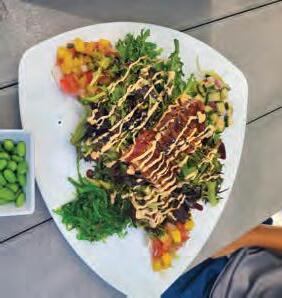



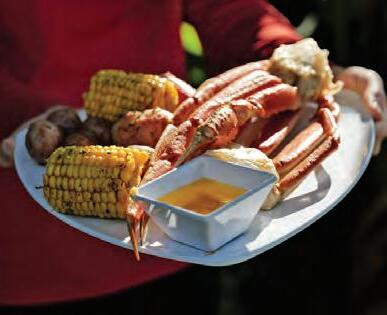






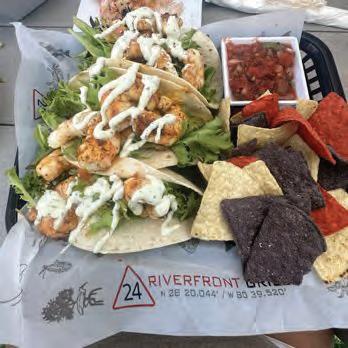
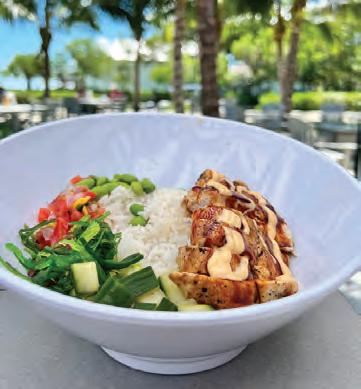
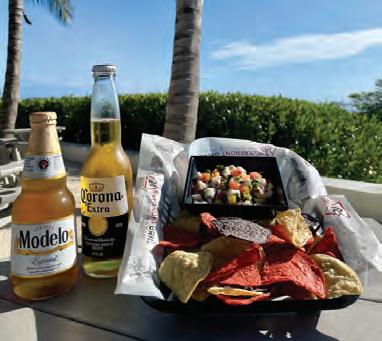


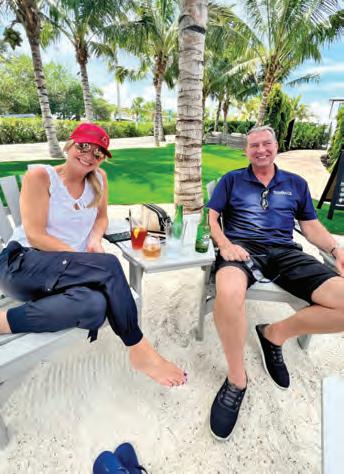

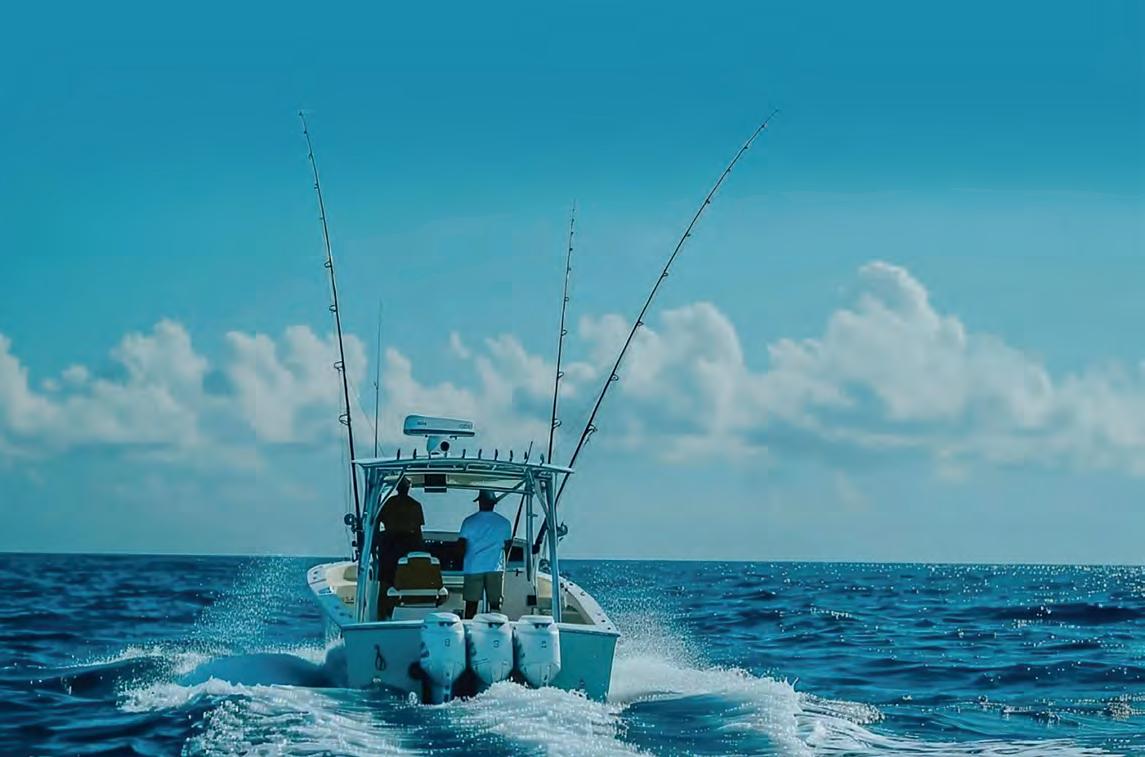


November can start early winter fishing patterns. If we have chilly weather, the seasonal transition will begin, and the subtropical, coastalmigrating species will begin moving south where they spend their winter, including tarpon, jack crevalle, ladyfish, pompano, and Spanish mackerel. The mullet run follows the same south bound route. How soon and low the water temperatures drop will determine the timing.
Resident fish such as redfish, snook, seatrout and snapper remain in our waters through winter, cold water species will begin to move in for the season, including sheepshead, black drum and bluefish.
Mosquito Lagoon water levels can remain high after a flooded autumn. In the lagoon and backcountry, shorelines can still be a good bet with high water as well as shallow grass and the flooded marsh. You can do more sight fishing if there is clearer water, and more blind casting soft plastics and soaking cut or live finger mullet/mud minnows in cloudy water.

mullet are always a go-to bait; hard plastics like MirrOdines and twitch baits also work well.

In early morning throw topwater lures over shallow edges, and over top of submerged drop offs. After the sun is up, switch to sub-surface, soft plastics with 1/8 or 1/16 jig head for deeper water, or weedless jerkbaits in the shallows. In the backwaters, free-lined live shrimp or finger
For pompano in the surf, look for clean water, fish the sloughs between sandbars. Sand fleas, cut clam, Fishbites and peeled shrimp can be best choices for bait. Some pomps also find their way into the backwaters.
Snook season is still open—28” to 32” slot size limit, 1 per person a day and a snook permit on
your fishing license is needed to keep one. To target the bigger ones, go with bigger baits like mullet, pinfish and select shrimp, free lined for surface action, with small weight for deeper spots. On artificials, larger swimming lures for surface, jigs and bucktails for deeper. Fish Ponce Inlet jetties and channel, bridge pilings, docks, Spruce Creek and Tomoka areas and Haulover Canal nightime, or early morning before sunrise. Moving water can be best in the tidal areas.
November also continues the bull redfish spawn. Ponce Inlet is the center of attention, but they can also be along the Intracoastal Waterway, NSB bridges and Haulover Canal. Anchor or drift and soak half or whole blue crabs, live pinfish, or mullet. Redfish remain catch-and-release only south of the New Smyrna SR44 bridge and flounder are closed through November.
Our first cold spell can come this month and, if it’s fast and hard, lagoon fish can get a little shocky after a year of warm water as they get used to the first cold water of the year.

November brings some much needed relief to the heat we experienced all year but the fishing doesn’t cool off. The bull redfish bite will continue at the inlet and if you mix up the bait your presenting this will continue
through about Thanksgiving. I typically switch from live mullet and croakers to cut bait (ladyfish, bluefish, jacks) and then my go-to in November is halved blue crab. I feel as if the fish start to snub the mullet and other bait fish as they have been eating on them all fall .
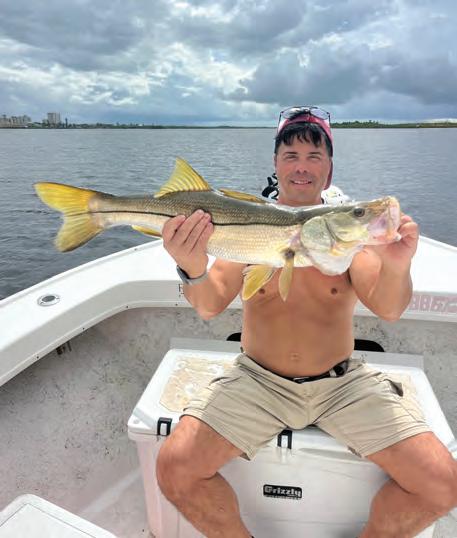
The snook bite in early November is usually on fire as well. I catch them all year on live baitfish, but in the fall drifting select shrimp with a long leader and a pinch weight or a small jig head seems to produce the most hookups. I also like throwing larger paddletails like a 5” when I am marking fish but can’t get them to eat live bait. There’s something about snook. If you rip an artificial past them enough, they will just give into that reaction bite! I also like using 20-25# flourocarbon for snook vs. 30-40# I use for the redfish. The biggest thing to remember in snook fishing is to change your leader after each fish as they will tear it up...and you don’t want to lose the next bite!
November also means the start of winter fishing for sheepshead and black drum for us around the inlet. I like using blue crab for these big uglies the same way I target bull reds. Most people don’t realize that black drum is much better table fare in my opinion than red drum, so if it’s dinner your after give them a shot.

As always if you see us on the water say yellow and if you’d like to see what our fishery is all about here in the central east coast of Florida give us a call to set up your trip!
CAPT. JAMIE THRAPPAS Yellow Dawg Fishing www.yellowdawgfishing.com (386) 366-3424
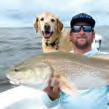



By Joey Bloom, Copper State Tackle Tournament Pro
There’s nothing quite like the rst real cold front of fall in the Southeast. One week you’re wearing a short-sleeve shirt and chasing schooling sh under bluebird skies, and the next, you’re bundled up, watching your breath in the morning fog, wondering where those sh disappeared to. When the water temps take that rst noticeable drop— usually sliding from the mid-70s into the 60s—it marks a big turning point in fall shing. e bass feel it too, and their behavior changes almost overnight.

A er a strong cold front, the rst thing I notice is how much tighter sh get to cover. ose aggressive, roaming schools that were chasing bait across shallow ats will suddenly scatter. e sudden high pressure that follows a front can make sh sulk and suspend, and the feeding windows get short. It’s not that they stop feeding entirely—they just reposition and get more selective. For me, this is when slowing down and thinking about the why behind each cast becomes crucial. Bass are still following the bait—usually shad— but their movements tighten up. I’ll start by checking shallow areas near deep water access, like secondary points, creek channel bends, or riprap banks near the mouths of pockets. ese are transition zones where bass can adjust depth easily as the temperature and pressure uctuate.
When those water temps dip, I turn to con dence baits that match the conditions and the mood of the sh. A lipless crankbait is one of my rst picks—it gives o a rattle and tight wobble that’s perfect for cooler water. I’ll run something like “Bill Lewis” 1/2 oz trap in a natural shad colors along
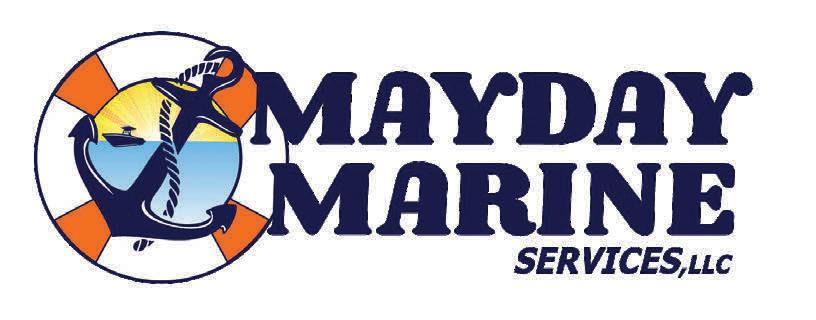


shell bars, grass patches, or around isolated wood. e key is to sh it methodically—make contact with cover and pop it o en. If the lipless bite feels o , I downshi into nesse mode. A 1/2-ounce jig with a Bait Cave Customs Cave Cricket Craw trailer is deadly around docks, brush, or isolated laydowns. I’ll pitch it on lighter line and really soak each piece of cover. e colder the water gets, the longer I’ll let that bait sit.
Another underrated player this time of year is a suspending Rapala jerkbait. When bass suspend er a front, that slow, twitch-pause-twitch cadence can trigger bites from sh that otherwise wouldn’t move far. On high-pressure bluebird days, I might make a cast, let the bait sit ten seconds, and only then give it a twitch. It’s all about patience and timing.
e best post-front patterns o en come down to consistency. Look for areas with a stable food source—places where bait sh stack up despite changing conditions. In reservoirs across the Southeast, that might mean a windblown main-lake point one day and a calm pocket the next. Keep an eye on your electronics, follow the bait, and don’t be afraid to adjust your depth until you see life.
Cold fronts separate the patient from the impatient. It’s a time to slow down, sh smart, and make every cast count. e bass might be moody, but they’re still there—and with the right mindset and a few Copper State Tackle baits on your line, you can turn those tough post-front days into opportunities.
Pro Tip: When in doubt, start with a lipless crankbait to cover water and locate active sh. Once you nd them, pick up a jig or shakey head with a Bait Cave Customs ick Stick worm to milk the area for those extra bites. You can grab both at Copper State Tackle—the gear I trust when every ounce matters. Follow all of Joey Bloom’s shing and fun on Instagram, Facebook, and YouTube at Joey Bloom Fishing.
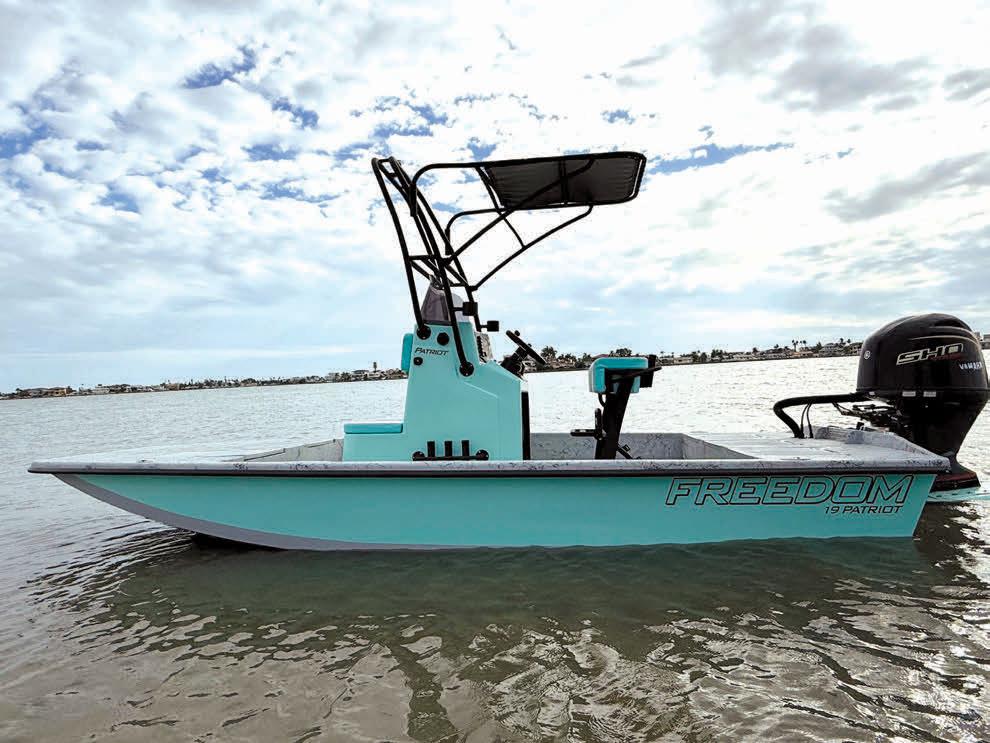


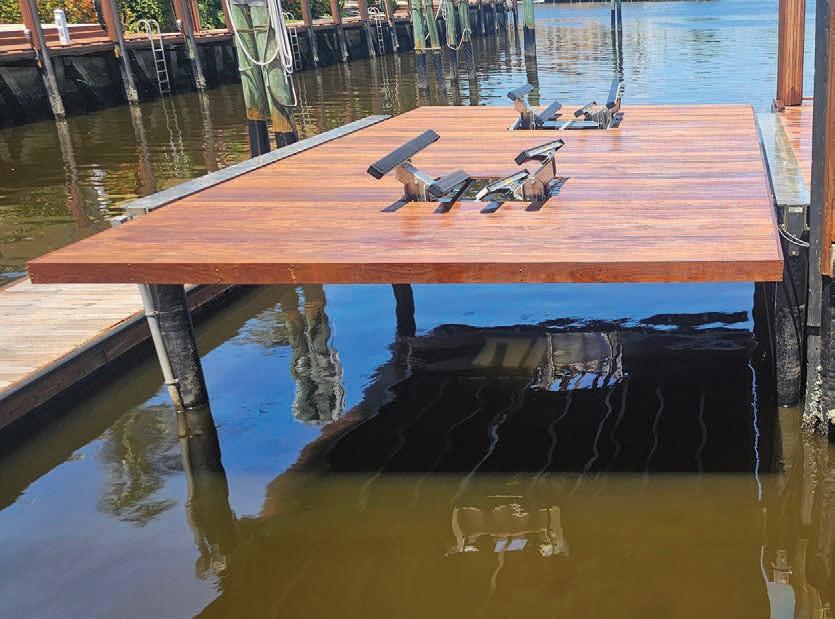
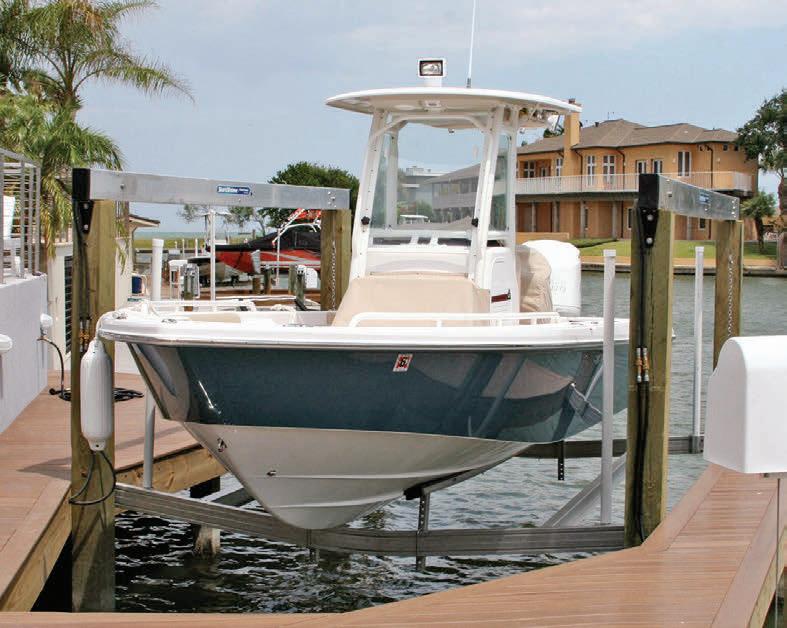

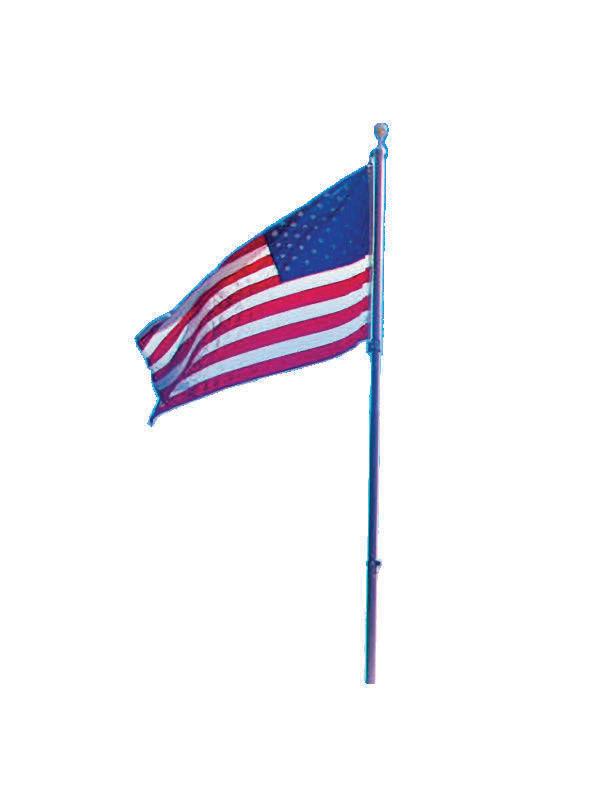
ShoreStation hydraulic boat lifts are a reliable choice for coastal residents and boating enthusiasts alike. Their strong construction, made with corrosion-resistant materials, allows them to withstand harsh environmental conditions, including sun, storms, and saltwater damage. ShoreStation provides a steadfast solution for protecting waterfront investments, o ering peace of mind to owners in the Sunshine State.


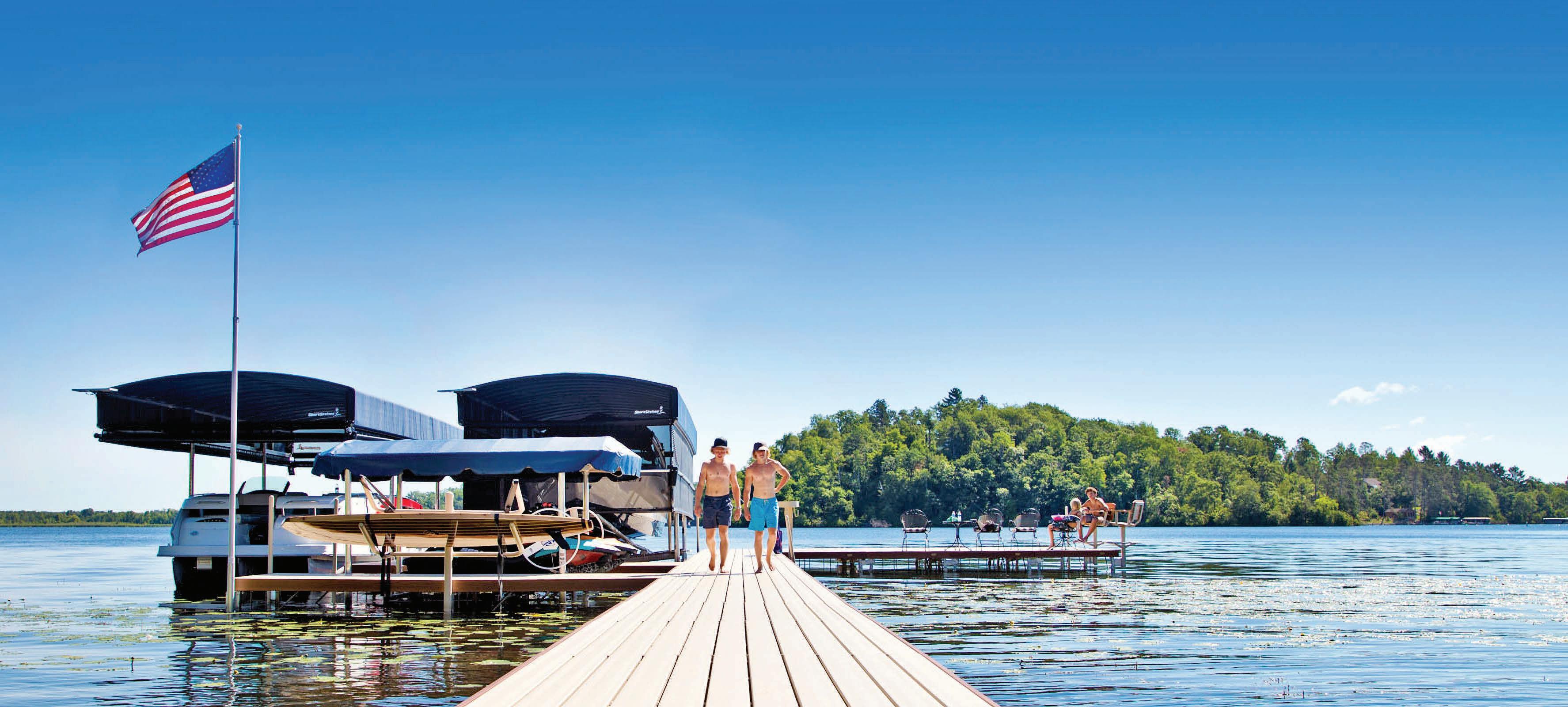




Equipped with exceptional weather resistant fabric and breathable SunTex 80 woven mesh ends for maximum protection and durability,

Made from the highest quality materials, our innovative hydraulic boat lift is one of the fastest and safest lifts on the market today. When you have a hydraulic lift, there’s no need to worry about wind and waves getting in your way. This lift will give you con dence to safely land and secure your boat in less-than-ideal conditions.
Never miss another moment on the water. Power your lift with clean, free solar power. Our speedy 20 watt charger features solar regulator drainage protection, saving your battery from permanent damage caused by overcharging.





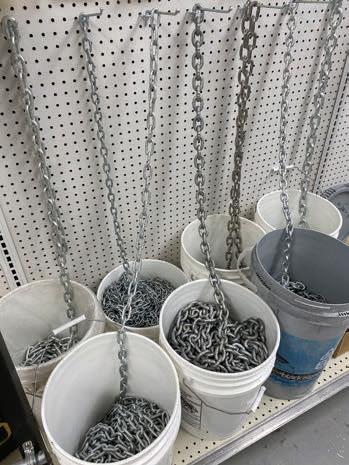









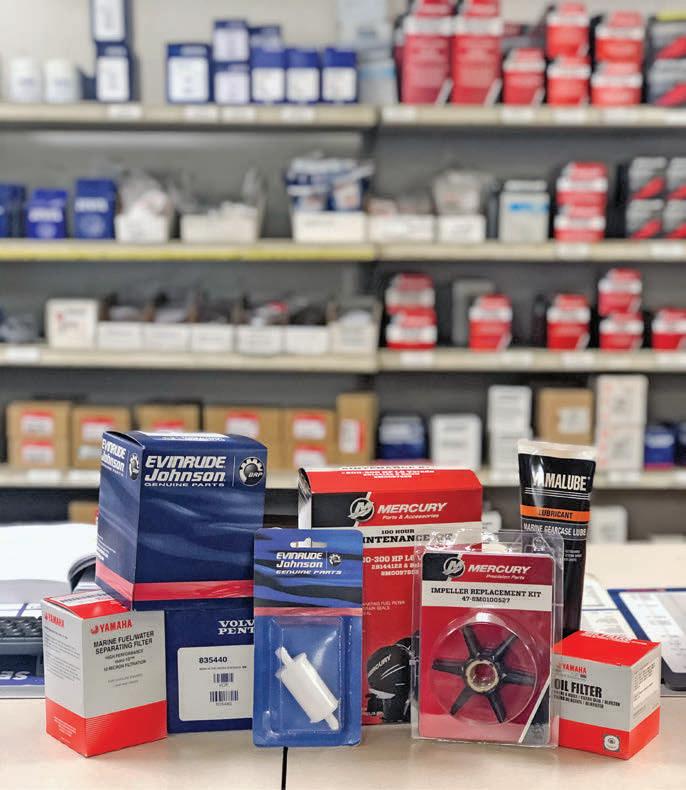
















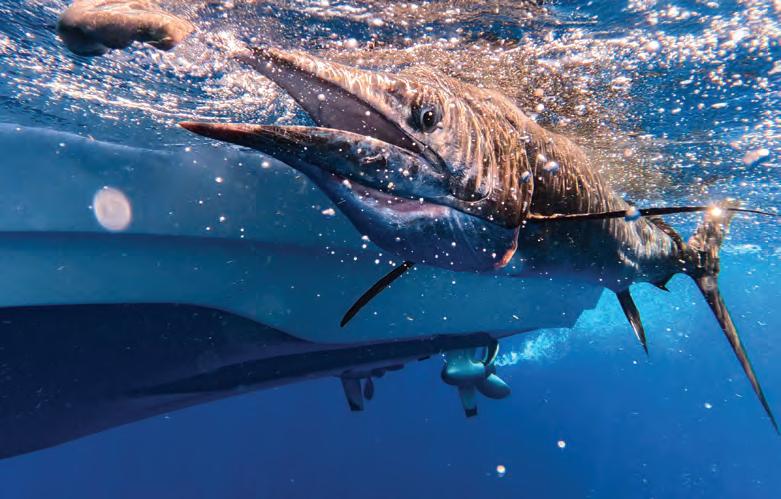
By Will Schmidt
Sail!sh are known as the fastest !sh on the planet, but they o er more than blazing speed to those who chase them o Florida’s east coast, such as I did on a recent !shing excursion. Spectacular surface bites and astonishing acrobatics make these !sh a coveted catch for even the most experienced anglers. For !rst timers, it’s an adrenaline !led !ght that will stick with you long a er the !sh swims back into the cobalt blue Atlantic. is trip was special for a few reasons. First, we had rising country star Ben Gallaher (IG: @Ben_Gallaher) with us. Ben is an avid outdoorsman and bass !sherman, but he had never caught a saltwater !sh. I was also excited to !sh with some new friends, Capt. Geoge Gozdz of “Unfathomed” (IG: @captgeorgegozdz) and Chris Bishop, VP of marketing at Yo-Zuri (iG: @Yozuri_Lures).
A er just a short run o Port St Lucie, we set our spread, and I could sense any strikes would likely be dramatic. e water was crystal clear and glass at giving us a great view of any action. e !rst !sh in, came crashing into the spread chasing and slashing at a bait with its bill. Unfortunately, as aggressively as it came in, it turned and retreated without eating.
As we reset the spread anticipation grew to !nd Ben’s !rst saltwater adversary. Fortunately, another sail came in a smashed the right rigger. However, it ran right at us, and we were never able to get tight. Undaunted, we set up again. Soon all the baits were nervously darting on the surface. e le atline erupted as the sail slashed, splashed and devoured the bait. Ben was on, and this !sh leapt and twirled with all the acrobatics of a Cirque du Soleil show. ere was still another to eat and moments later we doubled up. Both !sh cooperated with plenty of arial antics and a er a good !ght we had both !sh to the boat. To say Ben was pumped to land his !rst bill!sh is an understatement. Amped up with adrenaline and ready for more he could only beam with an ear-to-ear grin and say “let’s go!”
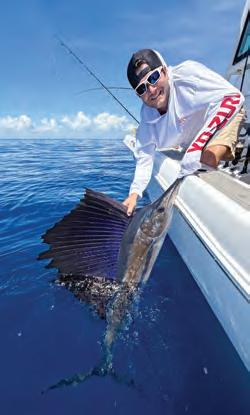


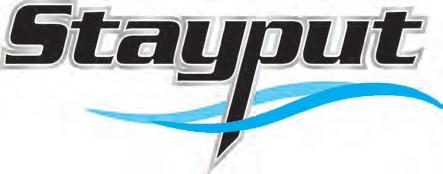
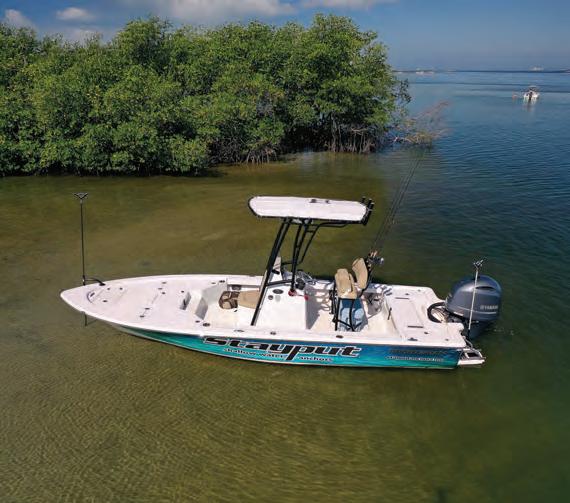





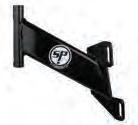

Fall !shing o of Port St Lucie o ers warm water and a hot bite without having to battle high winds and cold temperatures o en associated with winter sail!sh !shing in Florida.. Moreover, it’s not di&cult at all. We were simply bump trolling large, bridled thread!ns. Bridling helps the bait last longer and doesn’t allow for the hook to turn into the thread!n causing a missed strike. Our tackle was medium Penn Carnage rods with Authority reels lined with Yo-Zuri Super Braid topped with Yo-Zuri’s Disappearing Pink Fluorocarbon leader. ese setups gave us the sensitivity to feel the “eat” and the stealthiness to fool even the most cautious of !sh in these clear conditions. On your next trip don’t rush past these exciting sails, stop for some fun acrobatic action.
Will Schmidt is a seasoned tournament angler who has been writing about shing for more than two decades. Follow Will on Instagram @saltynstrong.



It’s no fsh tale when you run with a John Deere. You can get everything done faster and easier, so you get more time on the water. Plus, our special offers make them the catch of the day.



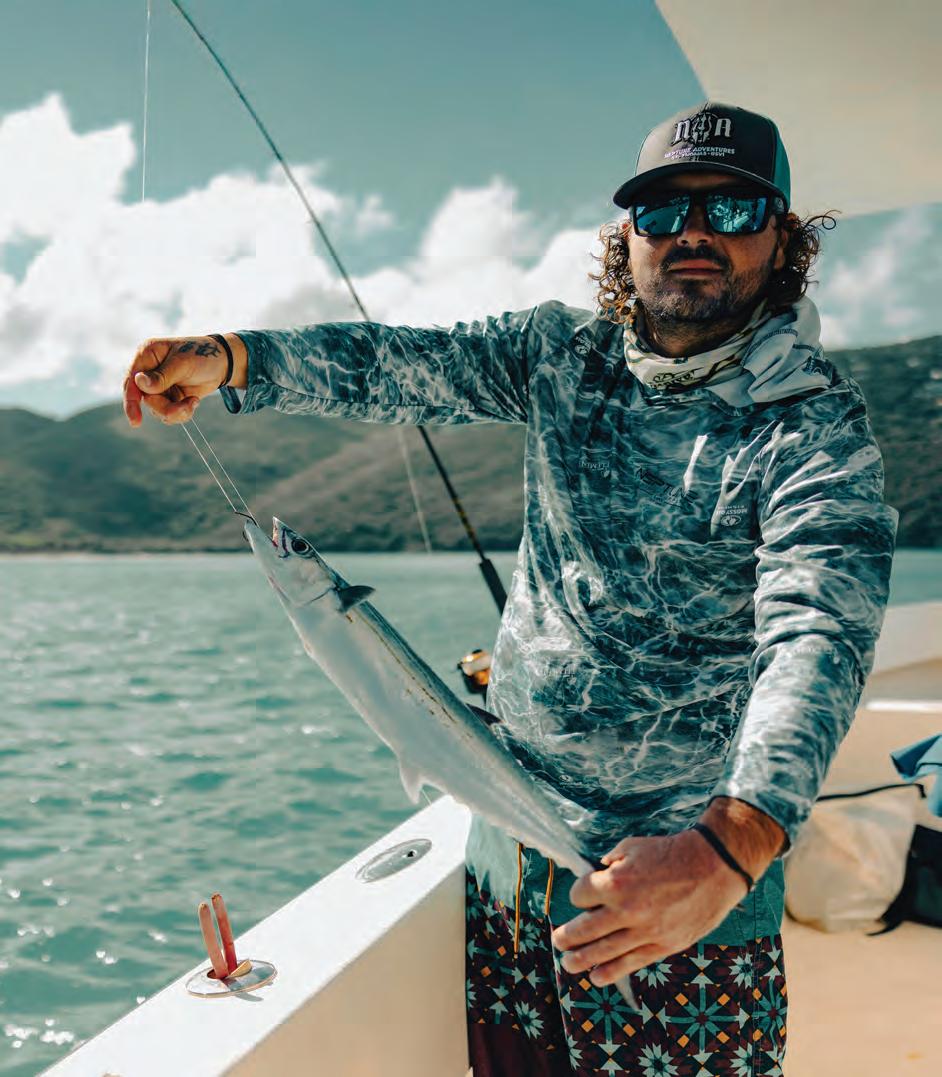
Anglers from around the world come to the U.S. Virgin Islands to !sh our incredible turquoise waters for trophy blue marlin, black!n tuna, wahoo and mahi-mahi. And with no passport required for U.S. citizens, it’s easy to plan your next !shing trip. Whether you want to set o on a crewed charter complete with a professional captain or prefer to simply cast a line from one of our scenic white-sand beaches, get ready to reel in the big one. Plus, many out!tters can customize your trip to include thrilling underwater activities like snorkeling.
O the island of St. Croix choose your own adventure, whether you’re looking to !sh o shore for mahi-mahi, wahoo, king!sh, tuna and blue marlin, or nearshore for tarpon, snapper, mackerel, rainbow runner and jacks. Seasoned crews who have been !shing the waters of USVI for decades will take you on customizable charters in search of catching your trophy !sh of a lifetime. Some out!tters o er complimentary !sh cleaning services, so all you have to do is throw your coveted catch on the grill or in the pan!
From St. John, troll for big game !sh—blue marlin, sail!sh, tuna, mahi-mahi and wahoo—on an o shore charter. Opt for a nearshore charter to catch bonito, barracuda, rainbow runner, snapper and
sharks. Or join an inshore bottom !shing trip to cruise the USVI’s deep-water reefs. Whether you’re an experienced angler or a novice needing some guidance, you’ll !nd an out!tter equipped with all the top-of-the-line !shing gear you’ll need for a successful day at sea.
About 20 miles north of St. omas is the North Drop, an area unparalleled for its big game !sh. Book a deep-sea !shing charter and sail over to this corner of the Caribbean that boasts more blue marlin bites per boat than any other place in the world. Half-day to 10-hour o shore bait !shing charters are ideal for adventurous anglers eager to experience the island’s famous North and South Drops. A mix of trolling and live baiting makes for mega catches, with yellow!n tuna, wahoo, mahi-mahi and blue marlin the most common catches of the day.
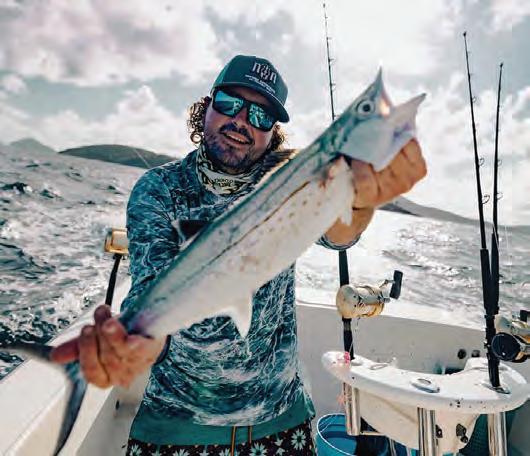
Surrounded by pristine blue waters, it’s no surprise that fresh seafood is a delicious part of nature’s bounty in USVI. You’ll !nd plenty of seafood-focused restaurants, from elegant !ne dining to laid-back waterfront eateries. Some out!tters even o er a stop at a seaside restaurant as part of their !shing excursions.




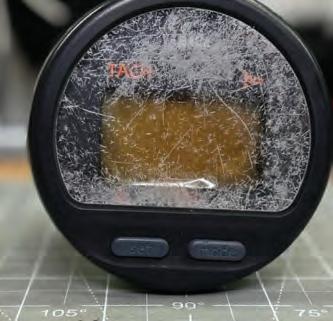


When the leaves start to turn and the water temps dip, bass anglers know what time it is—the fall feed. Bass are chasing bait like crazy, and it’s one of the best times of year to put big !sh in the boat. e trick is knowing what to throw as the season shi s. Here are !ve proven fall baits that will help you stay on the bite no matter what the lake throws at you.
Spinnerbait: Few baits scream “fall” like a spinnerbait. When the wind picks up and shad push shallow, it’s hard to beat a double willow blade ashing through the chop. e ash and thump imitate a school of eeing bait!sh, and hungry bass can’t resist. Target windy points, creek mouths, and shallow ats anywhere the bait’s getting pushed around.
Lipless Crankbait: is one’s all about covering water. Fall bass are constantly on the move, and a lipless crank lets you !nd ’em fast. Burn it over grass, rip it free when it hangs up, and hold on! at reaction bite is what fall !shing’s all about. Red or chrome patterns are money this time of year, especially when bass are chasing shad.
Jerkbait: Once the water clears and the temps drop into the 60s, it’s jerkbait season. Work it with a twitch-twitch-pause cadence, and you’ll mimic dying bait!sh to perfection. is lure shines around suspended bass that hang
o points or creek channels.


RJust be patient. Sometimes the bite comes right when you least expect it, on that long pause. Squarebill Crankbait & Swimbait: To round out your fall lineup, keep a squarebill and a swimbait on deck. A squarebill is your go-to for shallow cover stumps, rocks, laydowns, anywhere bass are ambushing bait in the backs of creeks. Meanwhile, a so or hard-bodied swimbait is ideal when you’re around big !sh feeding on larger forage. Slow-roll it through bait schools or along creek channels for some of the biggest bass of the year.
Fall is all about !nding the bait, and these !ve lures all mimic shad in their own way. Whether you’re slow-rolling a spinnerbait through wind-blown banks or ripping a lipless crank across a at, the !sh are feeding and it’s your job to get in on the action. Grab a few of these baits, follow the shad, and enjoy one of bass !shing’s most exciting seasons!
Tyler Woolcott is a professional tournament angler and guide. Check out his website at www.tylerwoolcott shing.com.

ed!sh are one of the most sought a er game !sh by inshore !shermen from Texas to the Carolinas. ey are great !ghters; they are great tasting; and they are perfect for sight !shing because they love super shallow water. Red!sh are part of the drum family and have four nostrils. is tells us that scent is their chosen sense while searching for food in dark and murky water.

e best red!sh lure that I have ever used is the 3-inch Berkeley Gulp! Shrimp. Berkeley Gulp! products are the smelliest baits that I have ever smelled and red!sh love them. ere are probably other stinky baits that work, but I haven’t found one that is comparable to Gulp! products. e best colors are anything with brown and gold glitter. Rootbeer and new penny are the best choices. e second best lure for catching red!sh is the gold or copper weedless spoon. ese are great search baits when you cannot see the red!sh. A slow retrieve with almost constant contact with the bottom is the way to !sh these lures. ese lures are exceptional for casting. ey cast a mile and let you cover a lot of water as you search for the schools of red!sh in the shallows.
e third best lure for red!sh are 3- and 4-inch paddletails rigged weedless. is is another great search bait for covering large areas of water. You will want to retrieve your paddletail in a similar way to your spoons. Make sure to bounce it o the bottom as you slowly retrieve it.
Contact Capt. Mike Smith, owner of Fish Your Ass O Charters, at (561) 339-2317, contact@ shyourasso .com or shyourasso .com.





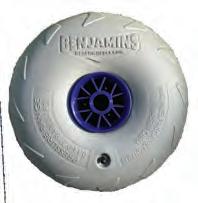


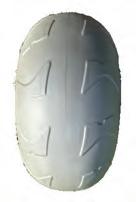
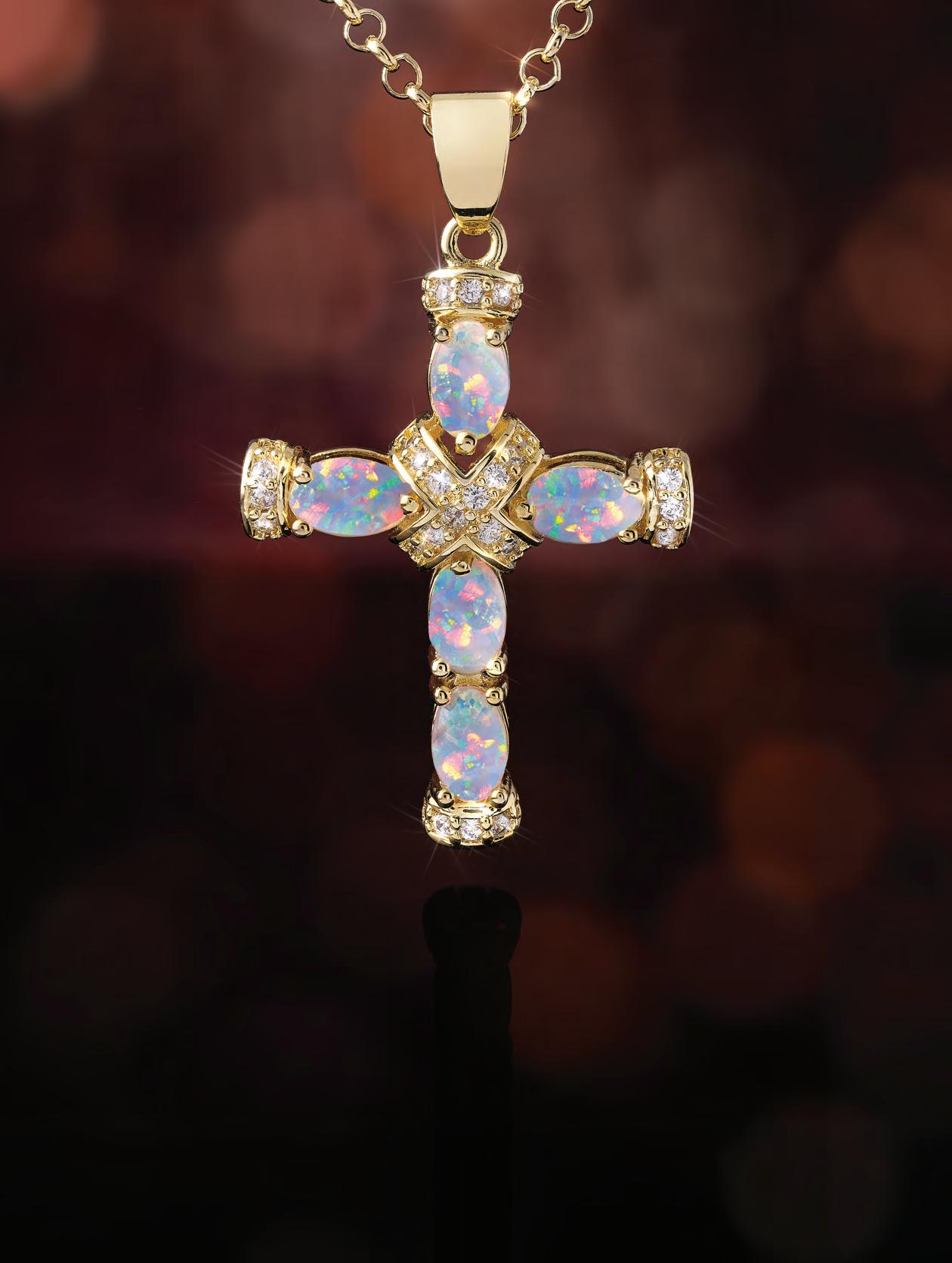
“I never expected it to be so beautiful that it takes your breath away.”
— Kaya C., on Stauer Opals
In a quaint village, nestled between rolling hills, lived a young woman with a deep appreciation for gemstones. Her grandmother gifted her a delicate cross pendant adorned with opals. "e opals shimmered with a mesmerizing play of colors, reflecting hues of blues, greens, and fiery oranges. Her grandmother shared the legend of the opals, believed to bring hope, purity, and luck to those who wore them.
Using this story as inspiration, Stauer brings you the Opal Spirit Cross Pendant. With over 2 total carats of Kyocera lab-created opals set in .925 sterling silver encased in yellow gold, this pendant is a radiant celebration of beauty and craftsmanship. Each opal captivates with a kaleidoscopic dance of fiery oranges blending into oceanic blues, streaked with flashes of vibrant green that seem to come alive with every movement. "e shimmering opals are skillfully arranged to create an enchanting, otherworldly glow, embodying the spirit of hope and harmony. "is breathtaking combination of color and craftsmanship is available as a limited availability of only 930 pieces, making it a rare and treasured addition

to your jewelry collection. Plus, when you order today, you’ll receive the Opal Spirit Cross Pendant at an impossible price of just $59 normally $149!
Don’t miss your chance to own this exclusive tribute to timeless elegance and meaningful symbolism.
Jewelry Speci!cations:
• Pendant: 2 ½ ctw. Kyocera lab opals and DiamondAura® accents. Yellow gold-finished .925 sterling silver setting
• Chain: 18" gold-clad .925 sterling silver chain
Opal Spirit Cross Collection




ovember is almost a completely unique month of the year. We’ll start getting the !rst real cold fronts, and this will pile the bait on temp breaks. Structure on the bottom will certainly hold the grouper and snapper on the bottom, but pay attention to the recorder and the marks in the mid water column. ese marks can be a number of the targets we’re looking for. Black!n are a given during the month of November, but it’s “go time” for wahoo and yellow!n. e bait can stand colder water than the pelagics. is is one of their biggest defensive strategies, and why you should have a (realistic) jig ready that can !sh 75-150 feet deep around the bait balls because the surface water will likely be as much as a few degrees warmer that the surface water due to the cold wind blowing overhead. Keep live baits out on circle hooks and ourocarbon and try to get some lower in the water column. ese live baits are black!n bombs ready to go o , but I am always drawn to the bottom in search for the grouper and snapper. Some of these same live baits or frozen cigs and sardines on the correct jigs (hint, hint) are irresistible to the !sh I’m really looking for. I want the big grouper and snapper bite. When you !sh the correct baits using the correct presentation, you’re not asking them to eat it, you’re MAKING them eat it! BAM! is is also African pompano candy. e jig in the mid to lower part of the water column is deadly, but if there’s no bites !shing it deeper and deeper all the way to the bottom, bring it up to the surface and repeat the process.

A trolling motor will really help in this controlled dri , keeping the bow forward into the wind and/or current. is will keep the light line out back and the baits on or near the bottom slightly back depending on the current. is is the bottom line: bag the trolling crap, post up on stacks of bait with dedicated crew for the light line and/or jig and dedicated crew on the bottom to generate groceries in the cooler. is is my kind grocery shopping.
Learn the drill of how to !sh the entire water column nice and quiet with beautiful baits and tactics for results. Dress with proper !tting foul weather gear and take plenty of photos and videos you can enjoy for years to come.
Learn more from Tim Barefoot on his YouTube channel and at barefootcatsandtackle.com.
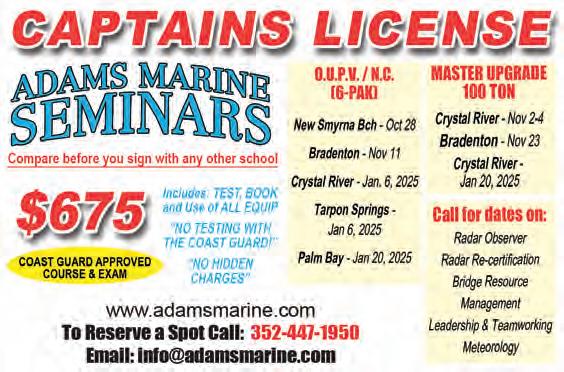
Spot Call: 352-447-1950









It was a warm summer afternoon and my wife and I were mingling with the best of them. The occasion was a 1920s-themed party, and everyone was dressed to the nines. Parked on the manse’s circular driveway was a beautiful classic convertible. It was here that I got the idea for our new 1920s Retrograde Watch.
Never ones to miss an opportunity, we carefully steadied our glasses of bubbly and climbed into the car’s long front seat. Among the many opulent features on display was a series of dashboard dials that accentuated the car’s lavish aura. One of those dials inspired our 1920s Retrograde Watch, a genuinely unique timepiece that marries timeless style with modern technology.
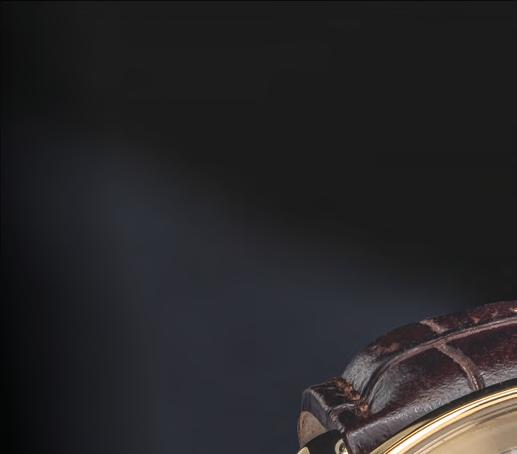
With its remarkable retrograde hour and minute indicators, sunburst guilloche face and precision movement, this design is truly one of a kind. What does retrograde mean? Instead of displaying the hands rotating on an axis like most watches, the hands sweep in a semicircle, then return to their starting point and begin all over again.
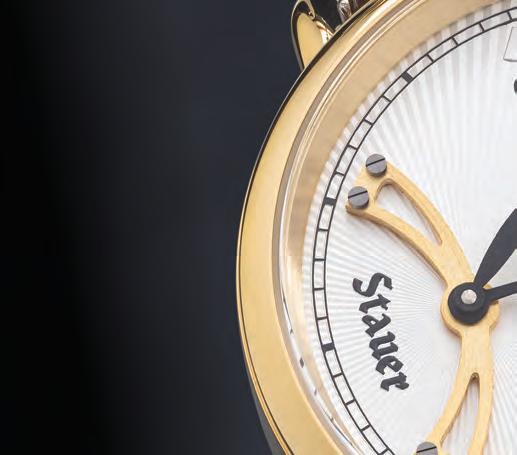
Retrograde watches by the big brands can set you back thousands; one recent offering from a big French fashion house is selling for more than $150,000! But because we’ve designed the 1920s Retrograde Watch in-house, we can offer it to you for just $99!
This watch is so wildly popular with our customers that we’re actually concerned about running out; we only have 937 729 left for this ad!
Join more than 1 MILLION smart people who love stauer watches

Watch Specifications:
• Precision movement
• Stainless steel case, caseback and crown
• Retrograde hour and minute indicators
• Water-resistant to 5 ATM




• Brown genuine leather band
• Fits wrists up to 8"
1920s Retrograde Watch
$399 $99* + S&P Save $300

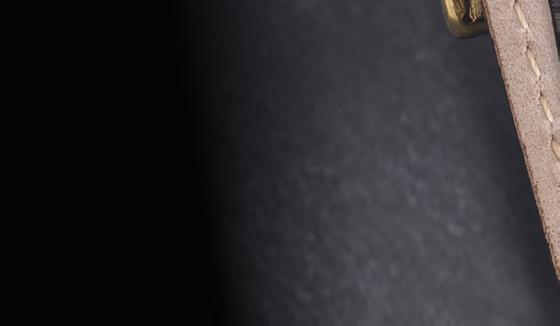
*Special price only for customers using the offer code.


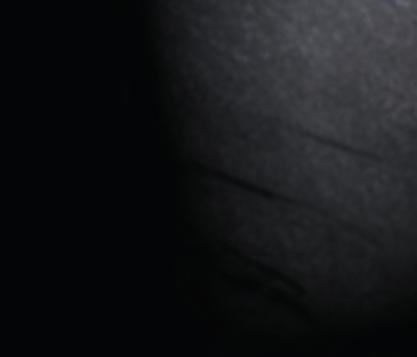


“An elegant and exciting timepiece that every collector will love.”
— George Tomas, internationally renowned watch expert



“[A] unique and beautiful timepiece.”
— Carlos C., Los Banos, CA



